

Call For Articles

North Carolina Pharmacist (NCP) is now accepting articles for publication consideration. As a peer-reviewed publication, NCP aims to inform, educate, and inspire pharmacists— from students and residents to seasoned practitioners— as well as pharmacy technicians in all areas of practice. We welcome a wide variety of submissions, including original research, quality improvement initiatives, medication safety, case reports or case series, reviews, clinical pearls, unique business models, technology innovations, and opinion pieces. Articles authored by students, residents, and new practitioners are encouraged, and mentors and preceptors are asked to guide their mentees and students in submitting appropriate written work for publication. The Author Instructions have been updated to clarify formatting requirements, improve guidance on referencing, and streamline the submission process. Key changes include a submission disclosure statement and notices regarding the appropriate use of AI. Authors are encouraged to review the complete instructions before submitting to ensure compliance with the new policies. Don’t miss this opportunity to share your knowledge and contribute to the advancement of pharmacy in North Carolina. For details on formatting and article types, click Guidelines for Authors, and for questions, please contact Tina Thornhill, PharmD, FASCP, FNCAP, Editor, at tina.h.thornhill@gmail.com.
Official Journal of the North Carolina Association of Pharmacists
PO Box 58
36 Court Square, SW
Graham, NC 27253
Phone: (984) 439-1646 www.ncpharmacists.org
EDITOR-IN-CHIEF
Tina Thornhill
LAYOUT/DESIGN
Rhonda Horner-Davis
EDITORIAL BOARD MEMBERS
Anna Armstrong
Jamie Brown
Lisa Dinkins
Jean Douglas
Brock Harris
Amy Holmes
John Kessler
Angela Livingood
Bill Taylor
BOARD OF DIRECTORS
EXECUTIVE DIRECTOR
Penny Shelton
PRESIDENT
Tom D’Andrea
PRESIDENT-ELECT
Leigh Foushee
PAST PRESIDENT
Bob Granko
TREASURER
Ryan Mills
SECRETARY
Macary Marciniak
Talia Carlson, Chair, SPF
Tyler Pasour, Chair, NPF
Lisa Dinkins, Chair, Community
Trent Beach, Chair, Health-System
Aparna Krishnamurthy, Chair, Chronic Care
Glenn Herrington, Chair, Ambulatory
Angela Livingood, At-Large
Elizabeth Locklear, At-Large
Leslie Barefoot, At-Large
North Carolina Pharmacist (ISSN 0528-1725) is the official journal of the North Carolina Association of Pharmacists. An electronic version is published quarterly. The journal is provided to NCAP members through allocation of annual dues. Opinions expressed in North Carolina Pharmacist are not necessarily official positions or policies of the Association. Publication of an advertisement does not represent an endorsement. Nothing in this publication may be reproduced in any manner, either whole or in part, without specific written permission of the publisher.
North Carolina Pharmacist
A Few Things Inside
CORRECTIONS AND ADVERTISING





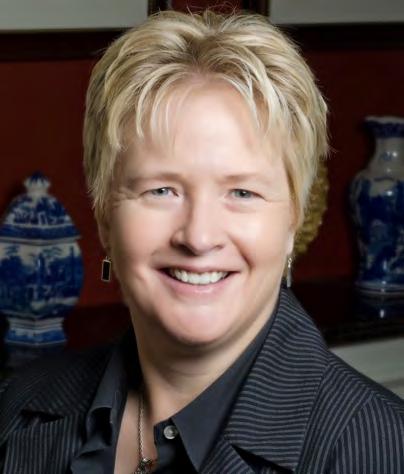
The energy, camaraderie, and palpable excitement generated at this year’s annual convention was truly magnificent. Although exhausted and weary from what had been a busy six months of advocacy work, as well as from the preparation for an anniversary convention, as your Executive Director, I felt, and still feel, as though I am on Cloud 9. As we gathered in the city of Asheville to celebrate 25 years of pharmacy unification, the event was made even more special because profession-altering legislation was being passed at the same time. The nostalgia surrounding 25 years of our history combined with the hope and thrill of a brighter future for our profession brought tears and jubilant cheers and applause to our Gala and Awards Ceremony. For many in the room, we had been advocating and waiting for years, even decades, for some of the changes to be made possible by the passing of House Bill 67. Others, particularly community pharmacy owners, had been fighting and praying for years for the reformation passed in the PBM Senate Bill 479. The NCAP staff and lobbyists have worked tirelessly to shoulder the battles, alongside our members, to get these two massive bills across the finish line. What makes these feats even more impressive
Penny S. Shelton, PharmD, FASCP, FNCAP
is that pharmacy saw more legislative victories this year, than in any other year in our history; and it was done in a year in which the General Assembly heard and passed a very small percentage of bills.
If you were not with us in Asheville, well I’m sorry that you missed out. During the gala, I remarked that those in the early years of their career could mark this moment in time as historical. The ability to tell future generations, I was there—I was in the room—when it happened, will be meaningful to you! There are not a lot of great profession-based historical moments that generate hallmark points-in-time for one’s career, but this 2025 Convention will become one.
I started thinking back over my career, I remember: a) the launching of the Asheville Project; b) the passing of the original collaborative practice and the beginning of Clinical Pharmacist Practitioners in our state; c) the creation of NCAP from the unification of all the previous separate organizations in our state; d) the passing of the original immunization bill; and e) the passing of our public health bill that gave pharmacists the ability to provide birth control, HIV PEP, and tobacco cessation care. All these historical moments remain important parts of our practice evolution; but with the passing of H67, we now enter a new and elevated era for our profession. In addition, the passing of S479 brings reform to help with the sustainability of pharmacies. Pharmacies have for far too long been
used and abused by PBMs to fuel their greed. For the first time, in a long time, there are some rays of hope shining among our pharmacy managers and owners.
The passing of H67 will also help with pharmacy sustainability. The bill amends the insurance statutes to clearly identify pharmacists as healthcare providers and requires health plans to pay pharmacists for the provision of healthcare services within their legal scope of practice. In addition, the changes to the existing collaborative practice statutes will bring much greater flexibility to expand collaborative practice into all practice settings and permit services that were not previously allowed. H67 also authorizes pharmacists for the treatment of influenza.
The enactment of the provisions within these two important bills requires many steps. NCAP is now working with stakeholders on processes, rules, protocols, resources, and we are working to outline programming that will assist pharmacists with implementation. The first step that we all need to take together is to help make pharmacists aware of the changes and new opportunities. On August 24, 2025, NCAP will provide a webinar that will review the implications and opportunities afforded by the passing of H67. I hope you will join us to catch some of the resolute hope that permeated the halls of our Annual Convention. Please enjoy perusing the content of this post-convention issue of our journal!
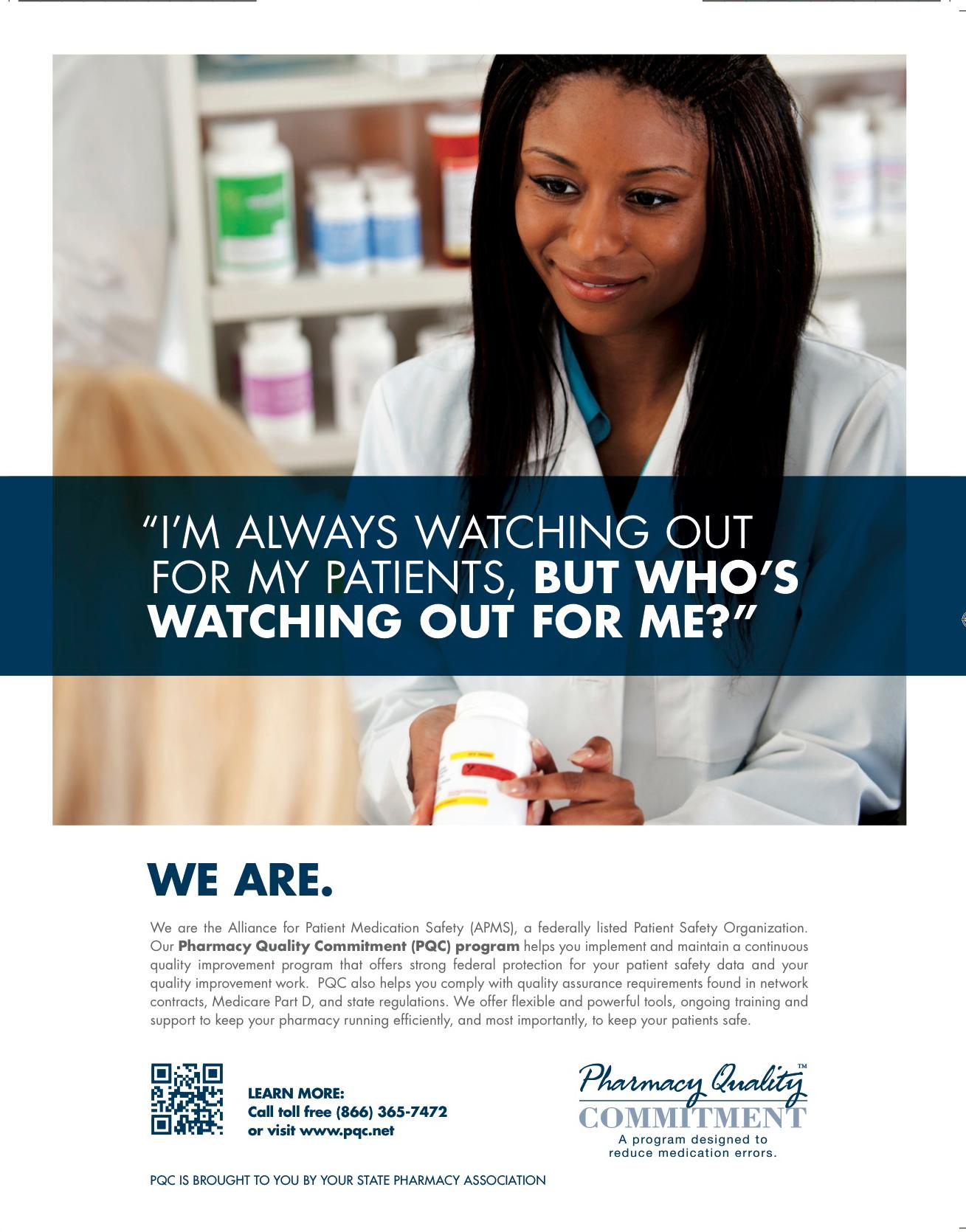

Dr. Ty Chapman is the 2025 Executive Fellow at the North Carolina Association of Pharmacists (NCAP) and a recent graduate of the UNC Eshelman School of Pharmacy. Originally from Westerville, Ohio, Ty moved to North Carolina with a mission to build community and advocate for a more just, patient-centered healthcare system.
Throughout pharmacy school, Ty was deeply involved in service and advocacy. As a member of the Student National Pharmaceutical Association, he led an oral history workshop at the Conetoe Family Life Center Summer Camp in Edgecombe County, where he taught children how to conduct interviews, ask powerful questions, and explore the stories of healthcare pioneers from Eastern North Carolina. The goal: to inspire a new generation of leaders grounded in community and storytelling.
A pivotal point in Ty’s advocacy work came when he collaborated with NCAP as a student working directly with Dr. Penny Shelton and NCAP’s Webmaster, Grant Ell, to develop an accessible PBM reform resource. This tool aimed to help pharmacists, patients, and politicians across North Carolina better understand the role of pharmacy benefit managers and support
meaningful policy change through education and grassroots engagement.
Ty’s passion for amplifying underrepresented voices also extends into his writing. He contributed a personal piece titled “Identity” to ASHP’s Hidden Narratives series, where he reflected on genealogical research that uncovered a surprising connection; his great-great-grandfather was a historic figure in Ohio’s pharmacy history. Ty also brings advocacy and art together through poetry, including a creative response to the APhA and AACP’s stance on the AMA’s article about “scope creep,” using humor and metaphor to reframe the narrative around pharmacists’ evolving roles.
Ty holds a Bachelor of Science in Pharmaceutical Sciences from The Ohio State University, with a minor in African and African American Studies. His professional path has been shaped by experiences at places like Health Park Pharmacy in Raleigh, where he found his voice as a student pharmacist advocate and learned firsthand the value of independent pharmacy in patient care and community health.
In addition to his work in pharmacy, Ty finds joy in reading science and historical fiction, kayaking, lifting weights, biking, and writing poetry. He also serves as a coordinator for the Marian Cheek Jackson Center’s Northside Residential Fellowship and Linking Generations program, where he promotes intergenerational connection and community wellness through oral history and
social justice work.
Ty applied to this fellowship to continue serving the pharmacists and patients of North Carolina, to advocate for their needs, learn from their lived experiences, and uplift their stories, using both policy and creativity to build a healthier, more equitable future.
NCAP is proud to welcome Dr. Ty Chapman as our 2025 Executive Fellow!
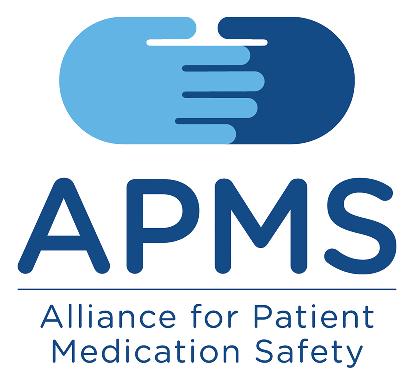
2530 Professional Road Suite 200 North Chesterfield, Virginia 23235
Toll Free: (866) 365-7472
www.medicationsafety.org
Dr. Ty Chapman

Expert coverage for experts like you.
Taking care of others is what you do. But even the best caregivers need looking after, too. That’s where the insurance experts at Pharmacists Mutual come in.
As a pharmacist, you hold an esteemed position in your community. People rely on you for your expert advice, unique knowledge, and experienced opinions. But by the very nature of your profession, you can become a natural target.
That’s why, with more than 110 years of experience, more pharmacists depend on Pharmacists Mutual for the added insurance protection and coverage they need to carry out their critical work.

Respiratory Readiness: The Latest on the Respiratory Syncytial Virus (RSV) Immunization
By: Kasey Holder, PharmD/MSPH Candidate
Introduction
As respiratory pathogens continually adapt, it is essential for healthcare professionals to stay up to date on the latest prevention, diagnostic, and treatment recommendations. Vaccines remain one of the most powerful tools in the prevention of respiratory illnesses, significantly reducing the burden of disease, hospitalizations, and mortality across vulnerable populations. Among the most impactful preventable respiratory infections is the respiratory syncytial virus (RSV). The Advisory Committee on Immunization Practices (ACIP) plays a central role in evaluating medical literature and providing expert recommendations to the Centers for Disease Control and Prevention (CDC) regarding best practices for vaccinations. Below is an overview of the impact of this infection, followed by a summary of the latest updates and recommendations for RSV.
Overview
RSV has become a major public health threat in the United States (US), with its biggest impacts on young children, older adults, and immunocompromised individuals.
The CDC estimates that RSV is the culprit for at least 100,000 hospitalizations annually for adults ≥ 60 years of age. Additionally, 80,000 children are hospitalized each year, and ≥ 2 million children visit a healthcare provider outpatient due to RSV annually. (1)
RSV is spread through surface contamination, respiratory droplets, and close contact with infected individuals. It’s season persists in the US from September to April, with a peak in the winter months. (2) Symptoms range from mild to severe, with infants and older adults being at the highest risk of more severe symptoms. Classic symptoms of RSV include rhinorrhea, cough, sneezing, wheezing, shortness of breath, and fevers. Based on these symptoms, it is crucial that RSV is considered in the differential diagnosis for patients presenting with cold or flu-like symptoms. RSV also has the potential to exacerbate heart failure (HF) and chronic obstructive pulmonary disease (COPD) in older adults, as well as asthma in children. (2)
At present, there is no specific antiviral therapy approved for the treat-
ment of RSV. Administration of ribavirin may be considered in cases of documented infections in severely immunocompromised patients. Management remains primarily supportive, focusing on symptom control. This may include oxygen, IV fluids, antipyretics, and mechanical ventilation to assist with breathing. (1,2) Antibacterials have no role in the treatment of RSV.
Prevention Updates
Unlike other infections, there is currently no immune marker or antibody threshold that predicts protection against severe RSV disease, and naturally acquired immunity after infection is likely to be limited and transient. (3) Current strategies for immunization focus on preventing severe disease in patient populations at the greatest risk: older adults and newborns. (4)
Vaccines for older adults. Given RSV’s high transmissibility, immunization is critical in preventing RSV hospitalizations and death. The CDC estimates that up to 800 deaths from RSV are prevented for every one million RSV vaccinations given to older adults. (1,2)
Prior recommendations for administering the RSV vaccine to older adults included using shared decision-making between the patient and provider for adults aged 60 years and older. (4) On August 6, 2024, the ACIP revised recommendations to include a single dose of RSV vaccine for adults ages 60–74 only if at increased risk of severe RSV disease, and for everyone 75 years or older. (5) In its most recent update as of June 25, 2025, the CDC, following ACIP guidance from April 2025, now recommends a one-time dose of the RSV vaccine for adults aged 50–59 who have risk factors for severe RSV disease. (6) These risk factors included chronic cardiovascular, liver, hematologic, or respiratory diseases, end-stage renal disease or dependence on hemodialysis or other renal replacement therapy, diabetes mellitus with associated complications, neurologic or neuromuscular conditions causing impaired airway clearance, severe obesity, and specified moderate/severe immune-compromising conditions.
The ACIP stated the changes were intended to maximize vaccination in persons most likely to benefit. Additional consideration was given to the post-licensure safety surveillance data on the incidence of Guillain-Barré syndrome (GBS) after protein subunit RSV vaccination prior to October 2023 (2.30 [95% CI: 0.39-13.72] and 4.48 [95% CI: 0.88-22.90] for Arexvy® and Abrysvo®, respectively). (7) Vaccine-attributable cases (range) were estimated to be 3(0-10) and
16(3-29) per million doses administered to those 60 years of age and older. (5) Based on these numbers, the ACIP determined there is inconclusive evidence that there may be an association between GBS and the RSV vaccination. Such safety surveillance after Moderna mResvia® vaccination was not available at the time the recommendations were published. (5) In addition, it was thought that implementation barriers associated with the previous shared clinical decision-making recommendation would be reduced by permitting qualified vaccinators to determine patient eligibility for RSV vaccination based on patient attestation of a risk factor and/or clinical assessment even in the absence of medical documentation of a named risk condition.
While all three FDA-approved RSV vaccines are ACIP-recommended, only Abrysvo® (Pfizer) is currently approved for administration to pregnant women. (5,7) (see Table 1)
seasons has been shown. (8,9) Further research is needed to evaluate the timing/benefit of additional RSV vaccines in patients. (10) Of note, the mRESVIA® vaccination, which uses mRNA technology, demonstrated 50% efficacy after 18 months for preventing respiratory illness. The Avrexy® and Abrysvo® vaccinations had approximately 78% efficacy after two RSV seasons. (7,8) Despite this, individuals who received a second dose one year after the initial dose exhibited minimal therapeutic benefit when compared to individuals who received only one dose. (7,8,9)
Although administered any time of the year, the CDC recommends older adults receive the RSV vaccination in late summer through early fall. (10) RSV vaccines can be co-administered with other adult vaccines during the same visit. (9) Studies have shown that patients are more likely to experience an adverse reaction when the vaccines are co-administered; however,
Additional data are needed on the duration of protection from RSV vaccination, the immune response after revaccination, and immunogenicity data in immunocompromised adults. Ongoing research demonstrates waning efficacy with each RSV season in adult patients, yet protection for at least two RSV
these reactions are low in severity and may occur with the administration of only one vaccine. These adverse reactions may include headaches and injection-site reactions. (11)
Prevention in newborns. Most infants acquire RSV-specific antibod-
Table 1. Comparison of FDA-approved RSV vaccines
ies transplacentally. This provides some protection that wanes over the first months of life. (12) Administration of RSV vaccine (RSVpreF, Abrysvo®) to pregnant women during the third trimester of pregnancy (32 weeks 0 days to 36 weeks 6 days gestation during RSV season) is intended to protect infants against RSV by transferring antibodies from the mother to the baby trans-placentally. These antibodies protect the neonate against RSV for approximately 6 months after birth. Two phase three trials established key efficacy and safety data of maternal vaccination. (13,14) Efficacy against RSV-associated severe medically-attended lower respiratory tract infection (MA-LRTI) was 82.4% (95% CI: 57.5–93.9) and 70.0% (95% CI: 50.6–82.5) at 90 and 180 days, respectively. (13)
In addition to maternal immunization, the administration of a monoclonal antibody against RSV given to infants right after birth or before the start of the RSV season provides passive immunity against RSV. Previously, palivizumab, a neutralizing monoclonal RSV antibody, required five monthly doses throughout the RSV season. However, expense limits its use to very high-risk infants and young children, mainly in high-income settings. (3) More recently, nirsevimab (Beyfortus®, AstraZeneca/Sanofi) is a recombinant monoclonal antibody administered intramuscularly as a single injection intended primarily to protect infants throughout their first RSV season. Data from clinical trials indicate that nirsevimab has approximately 75% efficacy (95% CI: 49.6-87.1) in preventing lower respiratory tract infections related to RSV. (15) Serious adverse events were reported in 6.8% of infants who received nir-
sevimab versus 7.3% of infants who received the placebo. (15) Another study that evaluated the pharmacokinetic data for nirsevimab in infants with extreme prematurity, chronic lung disease, or heart defects displayed that nirsevimab continued to be efficacious in these special populations. (16) Specifically, a third study concluded that weight-based dosing of nirsevimab is appropriate in those populations as well. (17)
Currently, weight-based dosing of nirsevimab is recommended for neonates less than 8 months born to mothers who are unvaccinated with a maternal RSV vaccine during pregnancy. If a mother gives birth between October and March and does not receive the RSV vaccine between 32 weeks 0 days and 36 weeks 6 days, gives birth within 14 days of vaccination administration, or has an unknown vaccination status, infants qualify to receive nirsevimab (Beyfortus®). (18) Recommendations are to administer a dose shortly before the RSV season, or within one week after birth if born during October to March in most of the U.S. (19) Children eight months through 19 months of age at increased risk for severe RSV should receive nirsevimab shortly before the child’s second RSV season. This group includes children who have chronic lung disease of prematurity, severe immunosuppression, severe cystic fibrosis, and/or American Indian and Alaska Native children. (19) If a child was born prematurely and has chronic lung disease, the dose would be recommended if diuretic therapy, supplemental oxygen, or chronic corticosteroid therapy was indicated within 6 months of the second RSV season. The American
Academy of Pediatrics details severe cystic fibrosis as a child who is in the less than the tenth percentile or who fits the criteria for serious lung disease. (19) If nirsevimab is not available, palivizumab (Synagis®) may be indicated; however, it is not preferred over nirsevimab due to increased cost, decreased convenience, and lower potency. (18,19)
As of June 2025, clesrovimab (Enflonsia®) gained FDA approval as another monoclonal antibody against RSV for infants. It is expected to be available for order in July 2025 and stands out due to its fixed 105 mg dose, regardless of weight, unlike nirsevimab and palivizumab. Clinical trial data showed that clesrovimab reduced RSV-related hospitalizations by approximately 84% and was comparable to palivizumab in terms of efficacy and safety. (20)
The use of a combined strategy involving maternal vaccination and administration of monoclonal antibodies to the newborn may be considered in special circumstances. Nirsevimab may be considered for infants born to vaccinated mothers in rare circumstances. Infants born to mothers thought unable or unlikely to achieve an adequate immune response to RSV vaccination or reduced transplacental transfer of antibodies (e.g., individuals with immunocompromising conditions) may be considered for such a strategy. In addition, infants undergoing procedures that may enhance antibody clearance (such as cardiopulmonary bypass or extracorporeal membrane oxygenation (ECMO), as well as those at increased risk for severe RSV infection) may also be considered for combination therapy. (21)
Conclusions
Healthcare professionals should work in tandem to provide optimal RSV vaccine recommendations, particularly for vulnerable and high-risk populations. The RSV vaccine has demonstrated proven benefits in decreasing mortality and hospitalizations. Currently, the RSV vaccine is recommended as a onetime dose in individuals who are high-risk and > 50 years, everyone > 75 years, and in pregnancy. Nirsevimab is a monoclonal antibody against RSV, which has shown efficacy in preventing hospitalizations and mortality related to RSV in infants. Remaining up to date with evolving guidance from the ACIP and CDC is essential for optimizing patient care and health outcomes.
Author: Kasey Holder is a 2026 PharmD/MSPH Candidate at Campbell University College of Pharmacy & Health Sciences. (kmpfaff0217@ email.campbell.edu)
References
1. Surveillance of RSV. Centers for Disease Control and Prevention. Accessed May 10, 2025. https://www. cdc.gov/rsv/php/surveillance/index. html#:~:text=RSV%20burden%20estimates,younger%20than%205%20 years%20old.
2. Clinical overview of RSV. Centers for Disease Control and Prevention. Accessed May 10, 2025. https://www. cdc.gov/rsv/hcp/clinical-overview/index.html.
3. World Health Organization (WHO). WHO position paper on immunization to protect infants against respiratory syncytial virus disease, May 2025. Available at https://iris.who. int/bitstream/handle/10665/381539/ WER10022-eng-fre.pdf?sequence=1 (accessed 6/3/25)
4. Melgar M, Britton A, Roper LE, et al. Use of respiratory syncytial virus vaccines in older adults: recommendations of the Advisory Committee on Immunization Practices—United States, 2023. MMWR Morb Mortal Wkly Rep 2023;72:793–801
ratory-syncytial-virus-rsv/trial-showswaning-efficacy-rsv-vaccine-across-3seasons-older.
10. Berg S. RSV Vaccines: Questions Patients May Have and How to Answer. American Medical Association. January 3, 2025. Accessed May 27, 2025. https://www.ama-assn.org/delivering-care/public-health/rsv-vaccinesquestions-patients-may-have-andhow-answer#:~:text=Will%20you%20 need%20to%20get,at%20least%20 two%20RSV%20seasons.
11. What to know about getting flu, COVID-19, and RSV vaccines at the same time. Centers for Disease Control and Prevention. November 2, 2023. Accessed May 27, 2025. https:// www.cdc.gov/ncird/whats-new/getting-vaccines-at-same-time.html#:~:text=Some%20people%20may%20 prefer%20to,would%20be%20difficult%20for%20you.
12. Chu HY et al. Respiratory syncytial virus transplacental antibody transfer and kinetics in mother-infant pairs in Bangladesh. J Infect Dis. 2014;210:582-9.
Key Points:
• RSV vaccines prevent RSV hospitalization and death.
• RSV vaccines are currently given as a one-time dose in eligible adults.
• Adults < 50 years, unless pregnant or high risk, are not indicated to receive the RSV vaccine at this time.
• Nirsevimab is a monoclonal antibody effective in preventing infant RSV-related hospitalizations.
5. Britton A, Roper LE, Kotton CN, et al. Use of Respiratory Syncytial Virus Vaccines in Adults Aged ≥60 Years: Updated Recommendations of the Advisory Committee on Immunization Practices — United States, 2024. MMWR Morb Mortal Wkly Rep 2024;73:696-702. DOI: http://dx.doi.org/10.15585/ mmwr.mm7332e1.
6. US CDC Accepts Ousted Vaccine Panel’s Recommendations for RSV, Meningococcal Shots. Reuters. Accessed July 9, 2025. https://reuters.com/ business/healthcare-pharmaceuticals/us-cdc-accepts-rsv-recommendations-made-by-former-vaccine-panel-2025-07-02/.
7. Healthcare Providers: RSV vaccination for adults 60 years of age and over. Centers for Disease Control and Prevention. July 3, 2024. Accessed May 28, 2025. https://www.cdc.gov/vaccines/vpd/rsv/hcp/older-adults.html.
8. Katella K. Should you get an RSV vaccine? Yale Medicine. January 9, 2025. Accessed May 10, 2025. https://www. yalemedicine.org/news/should-youget-an-rsv-vaccine.
9. Soucheray S. Trial Shows Waning Efficacy of RSV Vaccine Across 3 Seasons in Older Adults. CIDRAP. April 22, 2025. Accessed May 20, 2025. https://www.cidrap.umn.edu/respi -
13. Simões EAF et al., MATISSE (Maternal Immunization Study for Safety and Efficacy) clinical trial group. Efficacy, safety and immunogenicity of the MATISSE maternal respiratory syncytial virus prefusion F protein vaccine trial. Obstet Gynecol. 2025;145(2):157-67. doi:10.1097/ AOG.0000000000005816.
14. Kampmann B et al. Bivalent prefusion F vaccine in pregnancy to prevent RSV illness in infants. N Engl J Med. 2023;388:1451-64.
15. Hammitt LL et al. Nirsevimab for prevention of RSV in healthy late-preterm and term infants. N Engl J Med. 2022;386:837-46.
16. ESimões EAF et al. Efficacy of nirsevimab against respiratory syncytial virus lower respiratory tract infections in preterm and term infants, and pharmacokinetic extrapolation to infants with congenital heart disease and chronic lung disease: a pooled analysis of randomised controlled trials. Lancet Child Adolesc Health. 2023;7(3):180-9. doi:10.1016/S23524642(22)00321-2.
17. Clegg L et al. Population pharmacokinetics of nirsevimab in preterm and term infants. J Clin Pharmacol. 2024;64:555-67.
18. Nirsevimab Administration. American Academy of Pediatrics. July 11, 2024. Accessed May 10, 2025. https://
www.aap.org/en/patient-care/respiratory-syncytial-virus-rsv-prevention/ nirsevimab-administration/?srsltid=AfmBOorIyB5KODrSXVcX7xljQT1n3XfOWBkD8XsARBP38Tx6DAkx7W_C.
19. American Academy of Pediatrics (AAP). AAP Recommendations for the Prevention of RSV Disease in Infants and Children. Redbook Online. February 21, 2024. Available at https://publications.aap.org/redbook/resources/pdfDownload/25379 (accessed 6/3/25)
20. U.S. FDA approves Merck’s ENFLONSIATM (Clesrovimab-CFOR) for prevention of respiratory syncytial virus (RSV) lower respiratory tract disease in infants born during or entering their first RSV season. Merck. June 11, 2025. Accessed June 12, 2025. https:// www.merck.com/news/u-s-fda-approves-mercks-enflonsia-clesrovimab-cfor-for-prevention-of-respiratory-syncytial-virus-rsv-lower-respiratory-tract-disease-in-infants-bornduring-or-entering-their-fir/.
21. CDC. RSV Immunization Guidance for Infants and Young Children. Available at https://www.cdc.gov/rsv/ hcp/vaccine-clinical-guidance/infants-young-children.html (accessed 6/4/25)
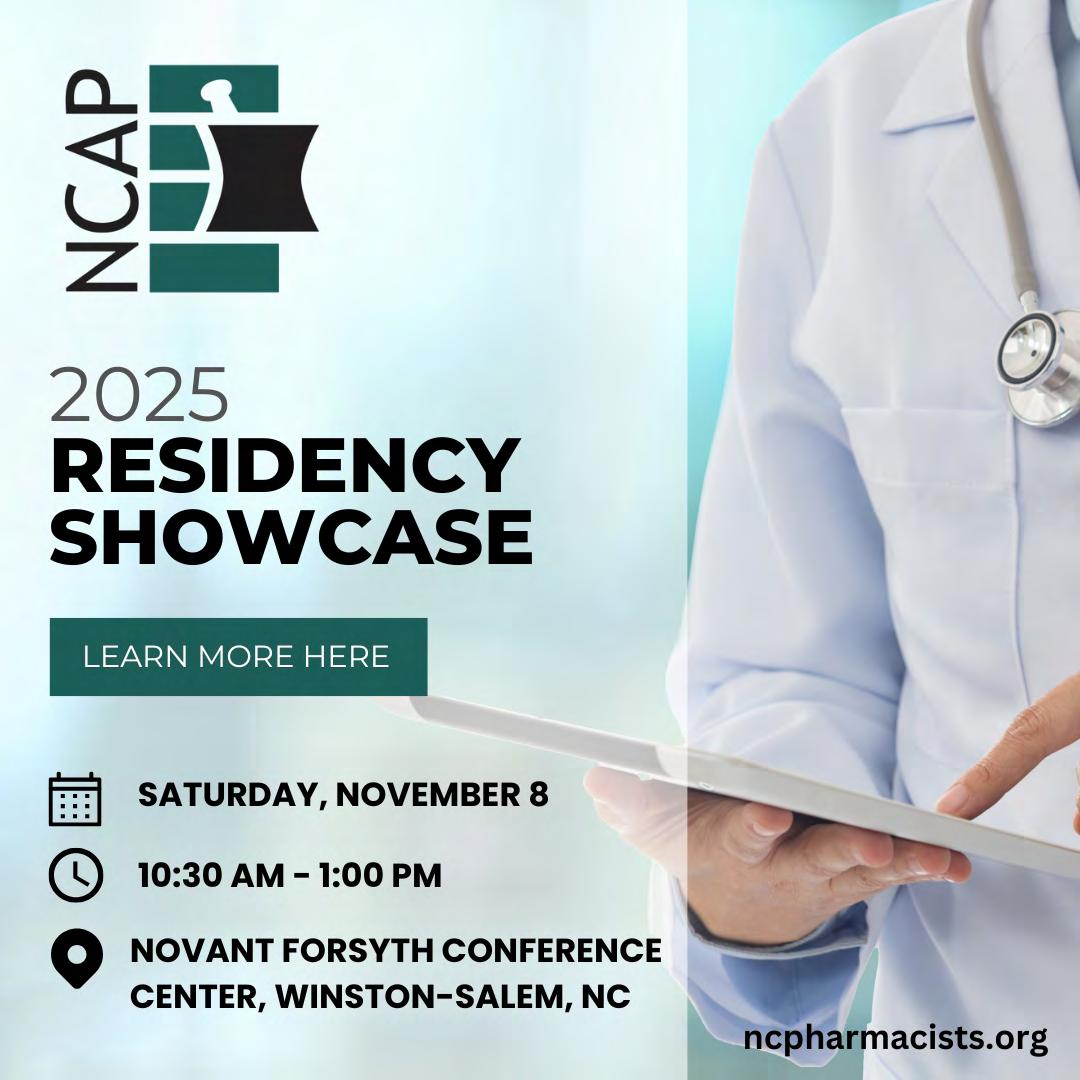
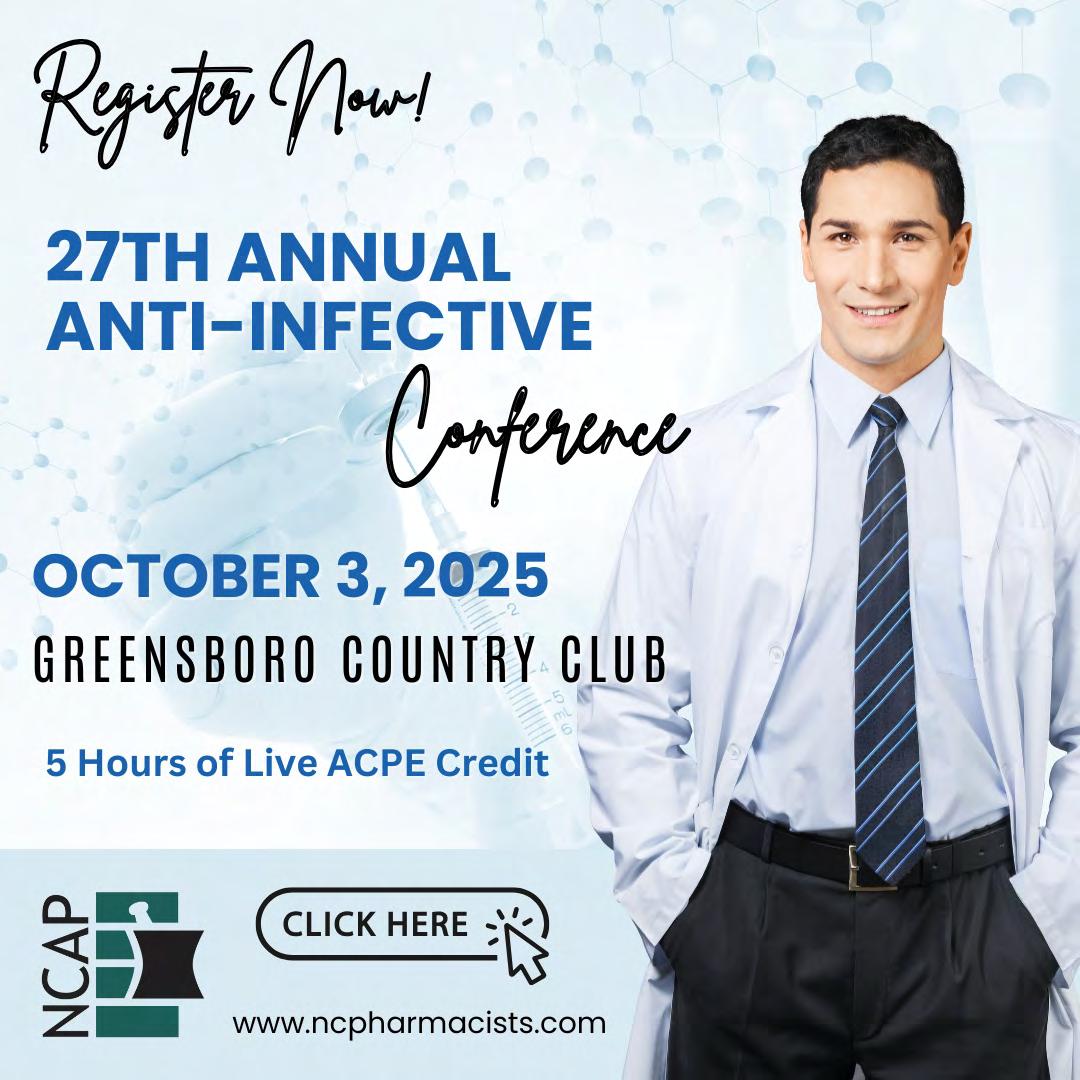
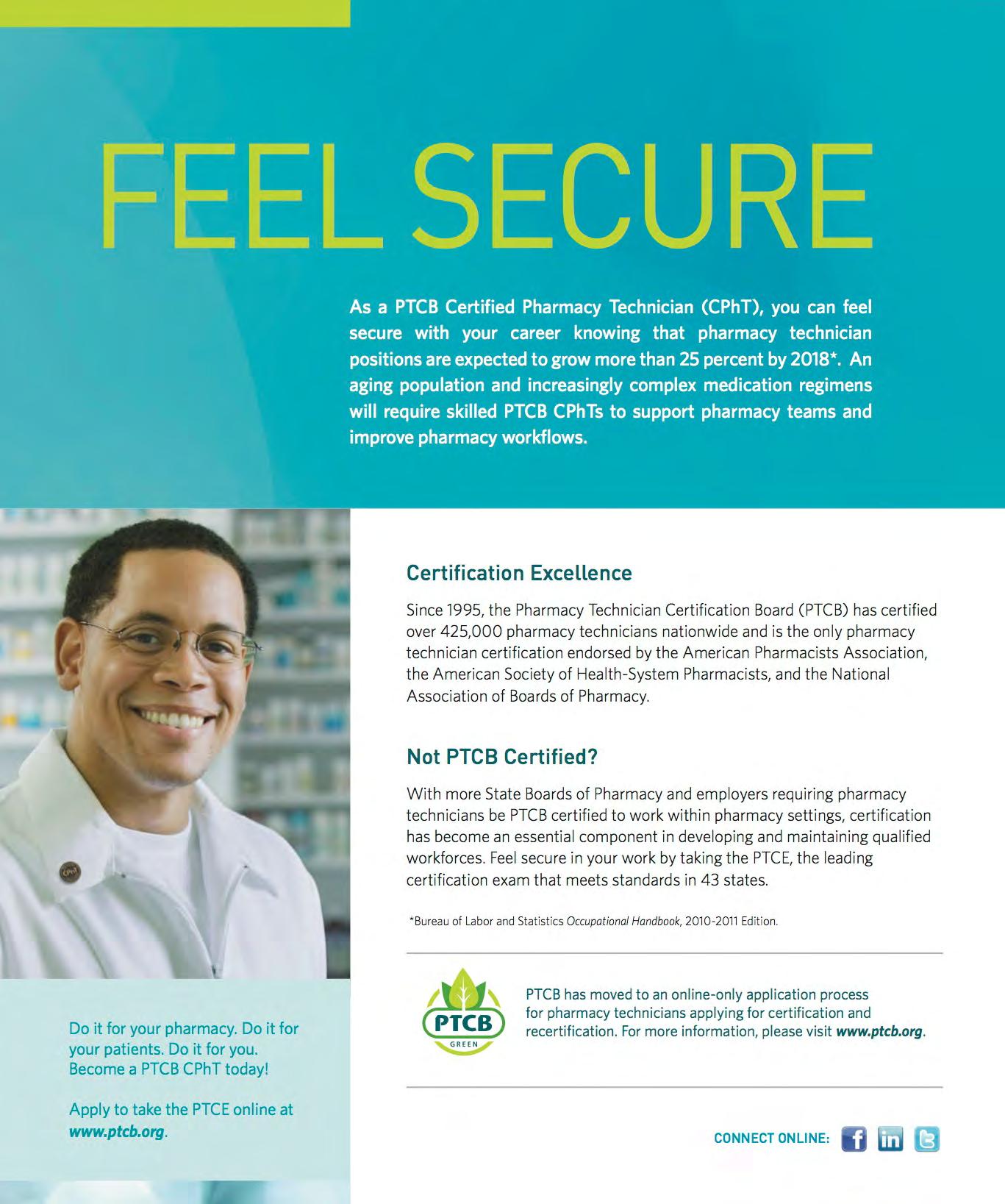
Jack of All Trades: Expanding Uses for Incretin Analogues

By: Payal Mehta, PharmD Candidate, Xyrish Pino, PharmD Candidate, and Dr. Angela Baalmann
Abstract
Background: Incretin analogues are a new class of agents that have shown benefit in managing both diabetes and obesity. The effects of two highly efficacious incretins, semaglutide and tirzepatide, have been heavily researched to expand their use beyond these two disease states.
Methods: A narrative review of several studies evaluating the clinical outcomes of semaglutide and tirzepatide beyond diabetes and obesity was performed. The information summarized aims to provide insights into their potential implications for patient care.
Results: Seven trials published between 2023 and 2024 were reviewed, which highlighted the expanded efficacy of semaglutide and tirzepatide across multiple health conditions. These conditions include heart failure, major cardiovascular events, obstructive sleep apnea, and osteoarthritis.
Conclusion: Semaglutide and tirzepatide appear to have broad therapeutic benefits beyond diabetes and obesity, with positive effects on related conditions. Results from
trials included in this review suggest that they, along with other incretin analogues, could serve as new treatment options in such conditions.
Introduction
Overweight and obesity have become worldwide health concerns, including in our own country, the United States (US). (1,2) The American Medical Association (AMA) officially recognized obesity as a disease in 2013, which helped shift public perception of these conditions toward recognition of the pathophysiological processes inherent in many obesity cases. (3) Not long before this, a new class of anti-hyperglycemic agents was growing in use for type 2 diabetes mellitus (T2DM) management. (4) These agents affected the incretin system, the hormone system primarily responsible for regulating dietary intake and blood glucose. (5) This new class of “incretin analogues” began with mimicking the hormone glucagon-like-peptide-1 (GLP-1). The GLP-1 receptor agonists (RA) have expanded their use to manage overweight and obesity after being extensively used for type 2 diabetes mellitus (T2DM).
Table 1 provides more details on current agents in use.
The causes of obesity are multifactorial, and being overweight signals a risk for obesity development. Adipose cells, when present in excess, can cause physiological changes that affect the entire body in either state, manifesting in a range of adverse health complications, including T2DM. (6) If these complications do not arise, excess weight can still compromise health and well-being. This is particularly the case in US society due to its existing culture, social structures, and societal norms. (6,7)
Weight loss achieved with incretin analogues has far surpassed that attained with other anti-obesity medications (AOMs), such as phentermine. They are even approaching the efficacy of invasive bariatric surgery. (8) Since the establishment of their efficacy for both T2DM and obesity management, the quest for the expanded uses of incretins has continued to the present day. This article provides a brief review of several recently published studies performed for the two highly efficacious incretins: semaglutide and
Table 1: Incretin Mimetic Options: Mechanisms and Approval Status (48-62)
Incretin analogue Hormone target(s) Approvals (year approved) Manufacturer
Exenatide (Byetta®) GLP-1 RA T2DM (2005) Amylin Pharmaceuticals
Liraglutide (Victoza®) GLP-1 RA T2DM (2009), obesity (2014) Novo Nordisk
Lixisenatide (Adlyxin®) GLP-1 RA T2DM in combination with insulin glargine (2016)
Sanofi-Aventis
Dulaglutide (Trulicity ®) GLP-1 RA T2DM (2014) Eli Lilly
Semaglutide (Ozempic®, Rybelsus® Wegovy®)
Tirzepatide (Mounjaro®, Zepbound®)
GLP-1 RA
T2DM (2017), obesity (2021) Novo Nordisk
GLP-1/GIP RA T2DM (2022), obesity (2023) Eli Lilly
Retatrutide GLP-1/GIP/glucagon RA In phase 3 trials Eli Lilly
Orforglipron GLP-1 RA (non-peptide) In phase 3 trials Eli Lilly
Suvodutide GLP-1/glucagon RA In phase 3 trials
Efpeglenatide GLP-1 RA In phase 3 trials
Boehringer Ingelheim
Hanmi Pharmaceutical/Sanofi
KEY: ER: extended release, GIP RA: gastric inhibitory polypeptide receptor agonist, GLP -1 RA: glucagon-like-peptide-1 receptor agonist, IR: immediate release, PO: by mouth, SQ: subcutaneous, T2DM: type 2 diabetes mellitus
tirzepatide. These studies, many of which were conducted internationally, demonstrate the expanded uses on the horizon for these and other incretin analogues. Additionally, a discussion of recent developments in insurance coverage and use in the US will be presented to update clinicians on this rapidly evolving area of medication use.
The STEP-HFpEF Trials: Semaglutide’s Heart Failure Benefits
Published in September 2023, the Semaglutide Treatment Effect in People with Obesity and Heart Failure with Preserved Ejection Fraction (STEP-HFpEF) trial was a randomized, double-blind, placebo-controlled study. (9) Its dual primary outcomes were weight reduction and reduction in heart failure-related symptoms. Heart-failure symptoms were assessed by the Kansas City Cardiomyopathy Questionnaire Clinical Summary Score (KCCQ-CSS). A higher KCCQ-CSS score indicates a more positive heart failure status. Secondary outcomes included a
reduction in heart failure hospitalization rates and improvement in comorbid conditions such as hypertension. Participants were eligible if they had obesity, a left ventricular ejection fraction (LVEF) of 50% or greater (indicating a preserved ejection fraction), and stable heart failure symptoms. Those with uncontrolled hypertension and/or T2DM were excluded.
A total of 529 participants were randomized, with 263 receiving a target dose of semaglutide 2.4 mg weekly and 266 receiving a placebo for 52 weeks. Those receiving semaglutide demonstrated significant weight reduction (-10.7% placebo-adjusted average change in body weight (-11.9-9.4%, p<0.001)) and improvement in heart failure symptoms (KCCQ-CSS placebo-adjusted average increase by 7.8 points (4.8-10.9 points, p<0.001)) compared to placebo. Secondary outcome results demonstrated that semaglutide was associated with a decrease in systolic blood pressure (-2.9 mmHg) and a positive trend
toward potential reduction in heart failure hospitalizations. Although the trial had a relatively short follow-up period and potential concerns regarding adherence to semaglutide, it introduced the unique cardiovascular (CV) benefits of semaglutide when combined with weight loss.
Not long after STEP-HFpEF, a similar trial was conducted for participants with HFpEF and comorbid T2DM. Known as “STEP-HFpEF DM,” this trial mimicked STEP-HFpEF in many ways, with a longer follow-up of 104 weeks. (10) It was published in April 2024 and included 616 randomized participants, 310 of whom received a target dose of semaglutide 2.4 mg weekly. Results revealed that a less significant but still positive improvements in weight reduction (-6.4% placebo-adjusted average change in body weight (-7.6-5.2%, p<0.001)) and heart failure symptoms (KCCQ-CSS placebo-adjusted average increase by 7.3 (4.1-10.4 points, p<0.001)) compared to placebo in the presence of comorbid T2DM.
Secondary analysis of participants included in the SELECT trial (see below) who also had heart failure (preserved or reduced ejection fraction) has also occurred. Results of this analysis confirm positive results from both STEP-HFpEF and STEP-HFpEF DM trials. (11)
The SELECT Trial: Semaglutide’s Cardiovascular Benefits
Published in November 2023, the Semaglutide Effects on Cardiovascular Outcomes in People with Over-
weight or Obesity (SELECT) trial was a randomized, double-blind, placebo-controlled trial exploring the impact of semaglutide 2.4 mg weekly in reducing major adverse cardiovascular events (MACE). (12) This potential was evaluated in adults (45 years or older) with overweight or obesity who also had preexisting cardiovascular disease (CVD) and did not have T2DM. The primary outcome was a traditional, 3-point MACE composite (death from CV causes, nonfatal myocardial infarction (MI), and nonfatal stroke). Secondary outcomes included death from CV causes, a composite endpoint related to heart failure, and all-cause mortality. Those currently receiving glucose-lowering medication(s), including GLP-1s for any indication, within 90 days of randomization were excluded from the trial, as were those diagnosed with severe heart failure and/or renal failure.
From 2018 to 2021, a total of 17,604 participants were randomized, with 8,803 receiving the target dose of semaglutide. The average follow-up was 40 months for all participants. Results demonstrated a significant reduction compared to placebo in the primary MACE composite outcome for those receiving semaglutide (Hazard Ratio (HR) 0.80 (0.72-0.90, p<0.001)). For the secondary outcome of death from CV causes, those receiving semaglutide demonstrated a reduction compared to placebo. However, this was not found to be statistically significant (HR 0.85 (0.71-1.01, p=0.07)). In participants with existing CVD, the SELECT trial findings support the use of semaglutide in reducing CV risk in this high-risk population. This trial expanded the CV benefits shown for this incretin
analogue in those without T2DM, already evident for those with T2DM. (13, 14)
The SUMMIT Trial: Tirzepatide’s Heart Failure Benefits
Examining other highly effective incretin analogues in the area of CV health, there is the SUMMIT trial. (15) Published in November 2024, this randomized, double-blind, placebo-controlled trial evaluated a target dose of tirzepatide 15 mg weekly in participants with obesity and HFpEF. The co-primary outcomes set at the trial’s initiation were a composite of death from CV causes or heart failure hospitalization, and change in KCCQ-CSS. These outcomes were revised based on the results of the STEP-HFpEF trial to facilitate a clear analysis of these components, which were previously housed in a composite outcome. The amendment included the addition of heart failure hospitalization rates as a primary outcome. Secondary outcomes included a change in body weight.
A total of 739 participants were randomized, with 364 receiving tirzepatide and being followed for an average of 104 weeks. Tirzepatide demonstrated a reduction compared to placebo in the amended, primary composite CV outcome (HR 0.62 (0.41-0.95, p=0.026) and an increase in KCCQ-CSS (6.9 average placebo-adjusted points (3.3-10.6, p<0.001)). A majority of participants (79%) were receiving the 15 mg weekly tirzepatide dose at the trial’s end. This study demonstrates that other incretin analogues may prove beneficial for heart failure management. Tirzepatide is currently being studied for its effects on CVD in the SURPASS-CVOT trial. (16)
The STEP 9 Trial: Semaglutide’s Benefits on OA Semaglutide’s positive effect on body weight in those with overweight or obesity is well-established based on data from various STEP trials. (17-19) With weight loss often comes resolution of weight-related complications, including osteoarthritis (OA). However, the direct effects of semaglutide on OA, in addition to body weight reduction, have previously been unknown. The STEP 9 trial added to the series of studies on this agent, examining its effect on OA of the knee. (20) Published in October 2024, this randomized, double-blind, placebo-controlled trial evaluated the effect of a target dose of semaglutide 2.4 mg weekly in participants with obesity experiencing moderate pain due to OA of the knee. Knee pain was assessed by the Western Ontario and McMaster Universities Osteoarthritis Index (WOMAC) pain scale. Lower WOMAC scores indicate less pain due to OA. The primary endpoints included changes in body weight and WOMAC scores. Secondary endpoints related to physical function.
A total of 407 participants were randomized, 271 of whom received semaglutide and were followed over 68 weeks. Semaglutide continued to demonstrate a reduction in body weight (-10.5% placebo-adjusted average change in body weight (-12.3-8.6%, p<0.001)) while also demonstrating a decrease in WOMAC scores (-14.9 placebo-adjusted average change in WOMAC points (-20.4-9.3 points, p<0.001)).
Statistically significant improvements in physical function were also demonstrated. Given that so many individuals with obesity also
have comorbid OA, semaglutide’s use may now prove to be optimal for individuals with both conditions. (21)
The SURMOUNT-OSA Trial: Tirzepatide’s Benefits in OSA Similar to semaglutide, tirzepatide has a history of data showing positive effects in the management of obesity. This has been demonstrated in the SURMOUNT trials. (22-24) It too was evaluated for benefit in a weight-related complication, this time being obstructive sleep apnea (OSA). Published in June 2024, the SURMOUNT-OSA trials evaluated two target doses of tirzepatide 10 mg or 15 mg weekly in those with obesity and moderate-severe OSA. (25) The primary outcome of both was improvement in OSA, measured by a change in apnea-hypopnea index (AHI) scores. Higher AHI scores indicate more severe OSA. Body weight was included as a secondary outcome, along with other measures related to OSA.
Data from two trials were reported, both of which followed randomized, double-blind, placebo-controlled methodology. One trial included participants who met the inclusion criteria and were on positive airway pressure (PAP) therapy, which independently reduces AHI, whereas the other trial did not. Participants with T2DM were excluded. In both trials, a total of 469 participants received tirzepatide and were followed for 52 weeks. Participants on PAP who received at least one dose of tirzepatide showed improvements in AHI (-20.0 average placebo-adjusted events per hour (-25.8-14.2 events per hour, p<0.001). Participants not on PAP also receiving at least one dose of tirzepatide showed even
greater improvements (-23.8 average placebo-adjusted events per hour (-29.6-17.9 events per hour, p<0.001)). Body weight and other OSA-related measures showed significant improvement, with an average, placebo-adjusted weight loss of -16.7% for those receiving tirzepatide. Data from this trial were used to support Zepbound’s® newly approved indication for moderate-severe OSA management in those with obesity. (26)
Target Trials: Semaglutide’s Benefits for
Tobacco Use Disorder
The precise mechanism behind the high efficacy of incretin analogues is largely unknown, particularly their neurohormonal effects and whether these impact other diseases that affect these pathways. A novel study known as a “target trial” evaluated semaglutide’s benefits in tobacco use disorder (TUD) compared to other anti-diabetes medications. (27) This “trial” was observational in nature and aimed to replicate elements of a randomized control trial. Seven of these trials were conducted, and aggregate data were reported in a single publication released in July 2024. Participants diagnosed with TUD, T2DM, and either obesity, hypertension, hypercholesterolemia, hyperlipidemia, heart disease, or stroke were evaluated. Inclusion criteria required participants to be newly initiated on at least one anti-diabetes medication and to have never received any anti-diabetes medications within the past year. Those with and without obesity were analyzed separately.
The primary outcomes related to TUD include rates of health encounters related to TUD, numbers of smoking cessation prescriptions,
and rates of smoking cessation counseling. A total of 222,942 participants were included in all trials, with 5,967 receiving semaglutide at an unspecified dose. Participants receiving semaglutide had a lower risk for TUD health encounters (HR 0.68 (0.63-0.74) compared to insulins in those with obesity, HR 0.60 (0.51-0.71) compared to insulins in those without obesity), lower risk for smoking cessation prescription use (HR 0.32 (0.28-0.38) compared to insulins in those with obesity, HR 0.32 (0.23-0.44) compared to insulins in those without obesity), and lower risk for smoking cessation counseling. This study yields several interesting findings, although caution should be exercised when interpreting these observational results. Still, these findings suggest that semaglutide may hold promise as a potential aid for smoking cessation. Currently, these studies alone do not yet provide sufficient evidence to justify off-label use of semaglutide for smoking cessation in clinical practice.
Retrospective Study: Semaglutide’s Benefit for Addiction-Related Disorders
Continuing in the evaluation of incretin analogs’ neurohormonal effects, a retrospective cohort study utilizing real-world data was conducted to evaluate their impact on addiction-related disorders. This study evaluated several incretins, including semaglutide and tirzepatide, on both opioid-use disorder (OUD) and alcohol use disorder (AUD). (28) Published in February 2025, this study analyzed data from 136 health systems in the US collected between January 2014 and September 2022. Adult participants with a diagnosis of OUD or AUD were included in the data analysis.
The primary outcome was rates of opioid overdose in those with OUD and alcohol intoxication in AUD. Several secondary measures were collected related to the individual patient history of each disorder. For participants prescribed an incretin, they were followed for up to two years after documentation of the first prescription (the index date).
A total of 503,747 participants with a history of OUD were analyzed. A total of 817,309 participants with a history of AUD were analyzed. The relative percentage of individuals prescribed an incretin in each group was minor (1.6% for OUD, 0.7% for AUD). For OUD, those prescribed an incretin demonstrated a lower incidence of opioid overdose (adjusted incidence rate ratio (aIRR of 0.6 (0.43-0.83)). Alcohol intoxication incidence was lower as well for those with AUD (aIRR of 0.5 (0.40.63)). These positive effects were demonstrated for both disorders when analyzing participants who also had T2DM, obesity, or both. While both the retrospective nature of this study and the low relative percent prescribed an incretin limit applicability of its results, their implications may prove to be a profound advancement in the management of OUD, AUD, and other addictive disorders.
Trial
for incretins in the future based on these trials and future trials. The large number of complications that manifest as a result of obesity and T2DM offers a wide variety for researchers to pursue in the future. Not all relevant trials were included in this review to limit its scope. Recently, Ozempic® secured approval for the reduction of chronic kidney disease (CKD) and CV death in those with T2DM and CKD based on the FLOW trial. (29, 30) STEP trials evaluating semaglutide continue, with STEP 9 recently evaluating its effects on pain related to OA. (31) Even indications for incretins not directly related to obesity or T2DM, such as Parkinson’s disease, are being explored. (32)
Research on incretin agents with various receptor target pairings is ongoing. The drug company Novo Nordisk recently shared data related to its GLP-1/amylin agonist amycretin, whose use was evaluated in those with overweight or obesity. (33) The results appear promising for this agent, and others adding to the original receptor target of GLP-1. These include retatrutide, a GLP-1/GIP/glucagon receptor ago-
populations
Discussion: Additional and Future Directions
These and other trials on incretin analogues demonstrate their appeal as a jackof-all-trades, useful in multiple disease states. Table 2 provides a summary of trials reported in this review. Society may see an expanded number of indications
SELECT Semaglutide 2.4mg weekly
SUMMIT Semaglutide 2.4mg weekly
STEP 9 Semaglutide 2.4mg weekly
SURMOUNT -OSA Tirzepatide 10mg or 15mg weekly
nist (nicknamed a “triple agonist”), currently in phase 3 trials. (49) Also included is the agent suvodutide, a GLP-1/glucagon receptor agonist, about to enter phase 3 trials. (50) Efpeglenatide is a GLP-1 RA manufactured by a Korean-based company, which has yet to gain FDA approval but has shown positive results in its phase 3 trial. (36, 37) Orforglipron is an oral GLP-1 RA currently in phase 3 trials, also demonstrating promising results. (38, 39)
Precise recommendations related to these agents and their manifold benefits are likely to emerge in guidelines from multiple organizations, including the American Diabetes Association (ADA). The ADA recently launched a new division, known as the “Obesity Association,” as it seeks to prevent diabetes by addressing the key risk factor of obesity. As it has established standards of care for diabetes for many years, it aims to establish similar standards for obesity through this division. The Obesity Medical Association, joined by the American Society for Metabolic and Bariatric Surgery (ASMBS), sent an open letter to the ADA, requesting
Overweight or obesity, preexisting CVD, without T2DM
Overweight or obesity and ≥ 1 comorbidity (e.g., hypertension, dyslipidemia, etc.)
Overweight or obesity, ≥1 CV risk factor or CV comorbidity
Moderate-severe OSA, without T2DM
Target Trials Semaglutide TUD and T2DM, and newly initiated on at least one antidiabetes medication and ≥ 1 comorbidity (e.g., hypertension, dyslipidemia, etc.)
Addiction-Related Disorders Several incretins (including semaglutide, tirzepatide)
OUD or AUD
Benefit demonstrated (statistically significant)
KCCQ-CSS score increase (i.e., improved heart failure-related functionality), reduction in systolic blood pressure
MACE reduction (traditional, 3-point)
CV event reduction (mortality, heart failure hospitalizations), KCCQ- CSS score increase
WOMAC score increased (i.e., decreased OA pain)
AHI score reduction (i.e., reduced OSA severity)
Reduced health encounters related to TUD
Reduced opioid overdoses and alcohol intoxication events
Table 2: Summary of Major Trials Reviewed
a collaborative effort from the ADA and other organizations with a primary focus on obesity.
The realities of clinical practice today require clinicians to consider not only guideline recommendations but also cost considerations. Many legislative changes have recently occurred related to prescription pricing, which may affect these agents. Passed in 2022, the Inflation Reduction Act (IRA) aimed to lower prescription drug costs by allowing Medicare to negotiate drug prices with pharmaceutical companies, securing lower costs for those insured under this program. (40) Ten drugs were initially selected for negotiation, several of which were indicated for diabetes (Januvia®, Farxiga®, Novolog®, etc.). (41)
In early 2025, fifteen additional drugs were selected for negotiation, including Ozempic®. Applicable indications included management of T2DM, T2DM with CVD, and overweight/obesity with CVD. (42) In early 2025, outside of IRA negotiations, Medicare announced coverage for Zepbound® for use in OSA in those with overweight/ obesity. (43) The previous interpretation of the Medicare Prescription Drug, Improvement, and Modernization Act of 2003 prevented Medicare from covering weightloss drugs. (44) A new interpretation was discussed and analyzed to cover agents like incretins for indications related to overweight and obesity, with a particular focus on their financial implications. (45, 46) Ultimately, benefits outweighing the financial risks were determined by Medicare to apply for Zepbound®, likely based on results from the SURMOUNT-OSA trial. However, coverage of all AOMs
may prove to be an unwise financial choice for Medicare and other insurance companies.
Public discussion and debate over incretins are likely to continue growing over the coming decades. This reality has “re-ignited” the long-standing debates over the disease of obesity and what constitutes appropriate treatment. While many have grown to accept obesity as a chronic disease, some remain very hesitant to accept incretins as an appropriate treatment. Others argue that it is unethical to withhold such agents from patients who may benefit from their numerous effects. (47) Hopefully, the US healthcare system will adapt to use agents in this class for the many patients who can benefit most from their powerful effects. Clinicians will need to stay vigilant and up to date as this rapidly evolving area of patient care continues to advance.
Conclusion
Incretin analogues, such as semaglutide and tirzepatide, have demonstrated significant benefits beyond their use in managing T2DM and obesity. As ongoing research continues to explore their broader applications, further studies are necessary to support expanded indications and off-label use. When considering patients for these drugs and when caring for those already prescribed them, clinicians should take into account recent advancements and the evolving landscape of insurance coverage to ensure optimal care.
Authors: Payal Mehta is a 2027 PharmD Candidate at High Point University’s Fred Wilson School of Pharmacy; Xyrish Pino, is a 2027 PharmD Candidate at High Point
University’s Fred Wilson School of Pharmacy; and (corresponding) Angela Baalmann, PharmD, BCACP, is a Clinical Assistant Professor at High Point University’s Fred Wilson School of Pharmacy (baalmann.angela@gmail.com.)
References
1. World Health Organization. Obesity and overweight. Published April 9, 2021. Accessed January 15, 2025. https://www.who.int/news-room/ fact-sheets/detail/obesity-and-overweight
2. Centers for Disease Control and Prevention. Adult obesity rates continue to rise. Published September 12, 2024. Accessed January 15, 2025. https:// www.cdc.gov/media/releases/2024/ p0912-adult-obesity.html
3. Obesity Medicine Association. AMA adopts policy to recognize obesity as a disease. Published June 18, 2013. Accessed January 15, 2025. https://obesitymedicine.org/blog/ ama-adopts-policy-recognize-obesity-disease/
4. Joy SV, Rodgers PT, Scates AC. Incretin mimetics as emerging treatments for type 2 diabetes. Ann Pharmacother 2005;39(1):110-118. doi:10.1345/ aph.1E245
5. Baggio LL, Drucker DJ. Biology of incretins: GLP-1 and GIP. Gastroenterology. 2007;132(6):2131-2157. doi:10.1053/j.gastro.2007.03.054.
6. Ogden J, Clementi C. The experience of being obese and the many consequences of stigma. J Obes. 2010;2010:429098. doi:10.1155/2010/429098
7. Gallup. Obese Americans face extra emotional, cultural challenges. Published January 8, 2025. Accessed January 15, 2025. https://news.gallup.com/poll/648407/obese-americans-face-extra-emotional-cultural-challenges.aspx
8. Singh A, Nissen SE. Contemporary Management of Obesity: A Comparison of Bariatric Metabolic Surgery and
Novel Incretin Mimetic Drugs. Diabetes Technol Ther. 2024;26(9):673-685. doi:10.1089/dia.2024.0122
9. Kosiborod MN, Abildstrøm SZ, Borlaug BA, et al. Semaglutide in Patients with Heart Failure with Preserved Ejection Fraction and Obesity. N Engl J Med. 2023;389(12):1069-1084. doi:10.1056/NEJMoa2306963
10. Kosiborod MN, Petrie MC, Borlaug BA, et al. Semaglutide in Patients with Obesity-Related Heart Failure and Type 2 Diabetes. N Engl J Med. 2024;390(15):1394-1407. doi:10.1056/NEJMoa2313917
11. Deanfield J et al. Semaglutide and cardiovascular outcomes in patients with obesity and prevalent heart failure: A prespecified analysis of the SELECT trial. Lancet 2024 Aug 24; 404:773. ( https://doi.org/10.1016/S01406736(24)01498-3)
12. Lincoff AM, Brown-Frandsen K, Colhoun HM, et al. Semaglutide and Cardiovascular Outcomes in Obesity without Diabetes. N Engl J Med. 2023;389(24):2221-2232. doi:10.1056/NEJMoa2307563
13. Marso SP, Bain SC, Consoli A, et al. Semaglutide and Cardiovascular Outcomes in Patients with Type 2 Diabetes. N Engl J Med. 2016;375(19):18341844. doi:10.1056/NEJMoa1607141
14. Husain M, Birkenfeld AL, Donsmark M, et al. Oral Semaglutide and Cardiovascular Outcomes in Patients with Type 2 Diabetes. N Engl J Med. 2019;381(9):841-851. doi:10.1056/ NEJMoa1901118
15. Packer M, Zile MR, Kramer CM, et al. Tirzepatide for Heart Failure with Preserved Ejection Fraction and Obesity. N Engl J Med. 2025;392(5):427437. doi:10.1056/NEJMoa2410027
16. Nicholls SJ, Bhatt DL, Buse JB, et al. Comparison of tirzepatide and dulaglutide on major adverse cardiovascular events in participants with type 2 diabetes and atherosclerotic cardiovascular disease: SURPASS-CVOT design and baseline characteristics. Am Heart J. 2024;267:1-11. doi:10.1016/j. ahj.2023.09.007
17. Wilding JPH, Batterham RL, Calanna S, et al. Once-Weekly Semaglutide in Adults with Overweight or Obesity. N Engl J Med. 2021;384(11):989-1002.
doi:10.1056/NEJMoa2032183
18. Davies M, Færch L, Jeppesen OK, et al. Semaglutide 2·4 mg once a week in adults with overweight or obesity, and type 2 diabetes (STEP 2): a randomised, double-blind, double-dummy, placebo-controlled, phase 3 trial. Lancet. 2021;397(10278):971-984. doi:10.1016/S0140-6736(21)00213-0
19. Wadden TA, Bailey TS, Billings LK, et al. Effect of Subcutaneous Semaglutide vs Placebo as an Adjunct to Intensive Behavioral Therapy on Body Weight in Adults With Overweight or Obesity: The STEP 3 Randomized Clinical Trial. JAMA. 2021;325(14):1403-1413. doi:10.1001/jama.2021.1831
20. Bliddal H, Bays H, Czernichow S, et al. Once-Weekly Semaglutide in Persons with Obesity and Knee Osteoarthritis. N Engl J Med. 2024;391(17):15731583. doi:10.1056/NEJMoa2403664
21. Holliday KL, McWilliams DF, Maciewicz RA, Muir KR, Zhang W, Doherty M. Lifetime body mass index, other anthropometric measures of obesity and risk of knee or hip osteoarthritis in the GOAL case-control study. Osteoarthritis Cartilage. 2011;19(1):37-43. doi:10.1016/j.joca.2010.10.014
22. Jastreboff AM, Aronne LJ, Ahmad NN, et al. Tirzepatide Once Weekly for the Treatment of Obesity. N Engl J Med 2022;387(3):205-216. doi:10.1056/ NEJMoa2206038
23. Garvey WT, Frias JP, Jastreboff AM, et al. Tirzepatide once weekly for the treatment of obesity in people with type 2 diabetes (SURMOUNT-2): a double-blind, randomised, multicentre, placebo-controlled, phase 3 trial. Lancet. 2023;402(10402):613-626. doi:10.1016/S0140-6736(23)01200-X
24. Wadden TA, Chao AM, Machineni S, et al. Tirzepatide after intensive lifestyle intervention in adults with overweight or obesity: the SURMOUNT-3 phase 3 trial [published correction appears in Nat Med. 2024 Jun;30(6):1784. doi: 10.1038/s41591-024-028831.]. Nat Med. 2023;29(11):2909-2918. doi:10.1038/s41591-023-02597-w
25. Malhotra A, Grunstein RR, Fietze I, et al. Tirzepatide for the Treatment of Obstructive Sleep Apnea and Obesity [published correction appears in N Engl J Med. 2024 Oct 17;391(15):1464. doi: 10.1056/NEJMx240005.]. N Engl J Med. 2024;391(13):1193-1205. doi:10.1056/NEJMoa2404881
26. U.S. Food and Drug Administration. FDA Approves First Medication for Obstructive Sleep Apnea. Published December 20, 2024. Accessed February 21, 2025. https://www.fda.gov/ news-events/press-announcements/ fda-approves-first-medication-obstructive-sleep-apnea
27. Wang W, Volkow ND, Berger NA, Davis PB, Kaelber DC, Xu R. Association of Semaglutide With Tobacco Use Disorder in Patients With Type 2 Diabetes: Target Trial Emulation Using Real-World Data. Ann Intern Med 2024;177(8):1016-1027. doi:10.7326/ M23-2718
28. Qeadan F, McCunn A, Tingey B. The association between glucose-dependent insulinotropic polypeptide and/ or glucagon-like peptide-1 receptor agonist prescriptions and substance-related outcomes in patients with opioid and alcohol use disorders: A real-world data analysis. Addiction 2025;120(2):236-250. doi:10.1111/ add.16679
29. Novo Nordisk. Novo Nordisk receives FDA approval for a new indication. Novo Nordisk US. Accessed February 11, 2025. https://www.novonordisk-us.com/media/news-archive/ news-details.html?id=915253&utm_ source=MarketingCloud&utm_medium=email&utm_campaign=PT+Daily+January+29&utm_content=PT+Daily+January+29
30. Perkovic V, Tuttle KR, Rossing P, et al. Effects of Semaglutide on Chronic Kidney Disease in Patients with Type 2 Diabetes. N Engl J Med. 2024;391(2):109121. doi:10.1056/NEJMoa2403347
31. Bliddal H, Bays H, Czernichow S, et al. Once-Weekly Semaglutide in Persons with Obesity and Knee Osteoarthritis. N Engl J Med. 2024;391(17):15731583. doi:10.1056/NEJMoa2403664
32. Vijiaratnam N, Girges C, Auld G, et al. Exenatide once a week versus placebo as a potential disease-modifying treatment for people with Parkinson’s disease in the UK: a phase 3, multicentre, double-blind, parallel-group, randomised, placebo-controlled trial. Lancet. Published online February 4, 2025. doi:10.1016/S0140-
33. Novo Nordisk. Novo Nordisk announces new global initiative. Novo Nordisk. Accessed February 11, 2025. https:// www.novonordisk.com/content/nncorp/global/en/news-and-media/ news-and-ir-materials/news-details. html?id=915251&utm_source=MarketingCloud&utm_medium=email&utm_campaign=PT+Daily+January+30&utm_content=PT+Daily+January+30
34. A Study of Retatrutide (LY3437943) in Participants With Obesity and Cardiovascular Disease (TRIUMPH-3). ClinicalTrials.gov. Identifier NCT05882045. https://clinicaltrials.gov/study/ NCT05882045 . Accessed February 12, 2025.
35. Wharton S, le Roux CW, Kosiborod MN, et al. Survodutide for treatment of obesity: rationale and design of two randomized phase 3 clinical trials (SYNCHRONIZE™-1 and -2). Obesity (Silver Spring). 2025;33(1):67-77. doi:10.1002/oby.24184
36. Gerstein HC et al. Cardiovascular and renal outcomes with efpeglenatide in type 2 diabetes. N Engl J Med 2021 Jun 28; [e-pub]. (https://doi.org/10.1056/ NEJMoa2108269)
37. Frias JP, Choi J, Rosenstock J, et al. Efficacy and Safety of Once-Weekly Efpeglenatide Monotherapy Versus Placebo in Type 2 Diabetes: The AMPLITUDE-M Randomized Controlled Trial. Diabetes Care. 2022;45(7):15921600. doi:10.2337/dc21-2656
38. A Study of Daily Oral Orforglipron (LY3502970) Compared With Insulin Glargine in Participants With Type 2 Diabetes and Obesity or Overweight at Increased Cardiovascular Risk (ACHIEVE-4). ClinicalTrials.gov. Identifier NCT05803421. https://clinicaltrials.gov/study/NCT05803421 . Accessed February 12, 2025.
39. Wharton S, Blevins T, Connery L, et al. Daily Oral GLP-1 Receptor Agonist Orforglipron for Adults with Obesity. N Engl J Med. 2023;389(10):877-888. doi:10.1056/NEJMoa2302392
40. Inflation Reduction Act of 2022, Pub L
No. 117-169, August 16, 2022.
41. Centers for Medicare & Medicaid Services. Medicare Selected Drug Negotiation List for Initial Price Applicability Year 2026. Published August 2023. Accessed January 24, 2025. https://www.cms.gov/files/document/fact-sheet-medicare-selected-drug-negotiation-list-ipay-2026. pdf
42. Centers for Medicare & Medicaid Services. Medicare Negotiation: Selected Drug List for Initial Price Applicability Year 2027. Published August 2024. Accessed January 24, 2025. https:// www.cms.gov/files/document/factsheet-medicare-negotiation-selected-drug-list-ipay-2027.pdf
43. Lovelace B. Medicare can now cover Eli Lilly’s Zepbound for sleep apnea, CMS says. CNBC. Published January 8, 2025. Accessed January 24, 2025. https://www.cnbc.com/2025/01/08/ medicare-can-now-cover-eli-lillys-zepbound-for-sleep-apnea-cms-says.html
44. Weixel N. Medicare faces pressure to cover costly obesity drugs for weight loss. The Hill. Published January 23, 2025. Accessed January 24, 2025. https://thehill.com/policy/healthcare/4548098-medicare-obesitydrugs-weight-loss/
45. Office of the Assistant Secretary for Planning and Evaluation. Exploring Medicare Coverage Options for Anti-Obesity Medications. Published January 2025. Accessed January 24, 2025. https://aspe.hhs.gov/sites/default/ files/documents/127bd5b3347b34be31ac5c6b5ed30e6a/medicare-coverage-anti-obesity-meds.pdf
46. Congressional Budget Office. Budgetary Effects of Laws Enacted in Response to the 2020 Coronavirus Pandemic, March 2020 to March 2021. Published September 2, 2021. Accessed January 24, 2025. https:// www.cbo.gov/publication/60441
47. Ryan N, Savulescu J. The Ethics of Ozempic and Wegovy. J Med Ethics Published online January 23, 2025. doi:10.1136/jme-2024-110374
48. Amylin Pharmaceuticals/Eli Lilly & amp; Co. Byetta (exenatide). U.S. Food and Drug Administration website. https://www. accessdata.fda.gov/drugsatfda_docs/
label/2009/021773s9s11s18s22s25lbl.pdf. Revised October 2009. Accessed March 20th, 2024.
49. AstraZeneca. Bydureon (exenatide). U.S. Food and Drug Administration website. https://www.accessdata.fda.gov/drugsatfda_docs/ label/2018/022200s026lbl.pdf. Revised April 2018. Accessed March 20th, 2024.
50. Novo Nordisk. Saxenda (liraglutide). U.S. Food and Drug Administration website. https://www.accessdata. fda.gov/drugsatfda_docs/label/2014/ 206321orig1s000lbl.pdf. Revised December 2014. Accessed March 20th, 2024.
51. Novo Nordisk. Victoza (liraglutide). U.S. Food and Drug Administration website. https://www.accessdata.fda.gov/drugsatfda_docs/ label/2010/022341lbl.pdf. Revised January 2010. Accessed March 20th, 2024.
52. Sanofi. Soliqua (insulin glargine and lixisenatide). U.S. Food and Drug Administration website. https://www.accessdata.fda.gov/drugsatfda_docs/label/2016/208673s000lbl.pdf. Revised November 2016. Accessed March 20th, 2024.
53. Eli Lilly. Trulicity (dulaglutide). U.S. Food and Drug Administration website. https://www.accessdata.fda.gov/drugsatfda_docs/label/2020/125469s036lbl.pdf. Revised September 2020. Accessed March 20th, 2024.
54. Novo Nordisk. Ozempic (semaglutide). U.S. Food and Drug Administration website. https://www.accessdata.fda. gov/spl/data/350beea5-c20f-4f259d4c-82dcfe3b0278/350beea5-c20f4f25-9d4c-82dcfe3b0278.xml. Revised August 2022. Accessed March 20th, 2024.
55. Novo Nordisk. Wegovy (semaglutide). U.S. Food and Drug Administration website. https://www.accessdata.fda.gov/drugsatfda_docs/ label/2023/215256s007lbl.pdf. Revised July 2023. Accessed March 20th, 2024.
56. Eli Lilly. Mounjaro (tirzepatide).
U.S. Food and Drug Administration website. https://www.accessdata.fda.gov/drugsatfda_docs/label/2022/215866s000lbl.pdf. Revised May 2022. Accessed March 20th, 2024.
57. Eli Lilly. Zepbound (tirzepatide).
U.S. Food and Drug Administration website. https://www.accessdata.fda.gov/drugsatfda_docs/label/2023/217806s000lbl.pdf Revised November 2023. Accessed March 20th, 2024.
58. Jastreboff AM, Kaplan LM, Frías JP, et al. Triple-Hormone-Receptor Agonist Retatrutide for Obesity - A Phase 2 Trial. N Engl J Med. 2023;389(6):514526.
59. Wharton S, Blevins T, Connery L, et al. Daily Oral GLP-1 Receptor Agonist Orforglipron for Adults with Obesity. N Engl J Med. 2023;389(10):877-888.
60. Le Roux CW, Steen O, Lucas KJ, Startseva E, Unseld A, Hennige AM. Glucagon and GLP-1 receptor dual agonist survodutide for obesity: a randomised, double-blind, placebo-controlled, dose-finding phase 2 trial. Lancet Diabetes Endocrinol. 2024;12(3):162-173. doi:10.1016/S2213-8587(23)00356-X
61. Frias JP, Choi J, Rosenstock J, et al. Efficacy and Safety of Once-Weekly Efpeglenatide Monotherapy Versus Placebo in Type 2 Diabetes: The AMPLITUDE-M Randomized Controlled Trial. Diabetes Care. 2022;45(7):15921600. doi:10.2337/dc21-2656
62. Garvey WT, Mechanick JI, Brett EM, et al. American Association of Clinical Endocrinologists and American College of Endocrinology Comprehensive Clinical Practice Guidelines for Medical Care of Patients with Obesity. Endocr Pract. 2016;22 Suppl 3:1-203. doi:10.4158/EP161365.GL
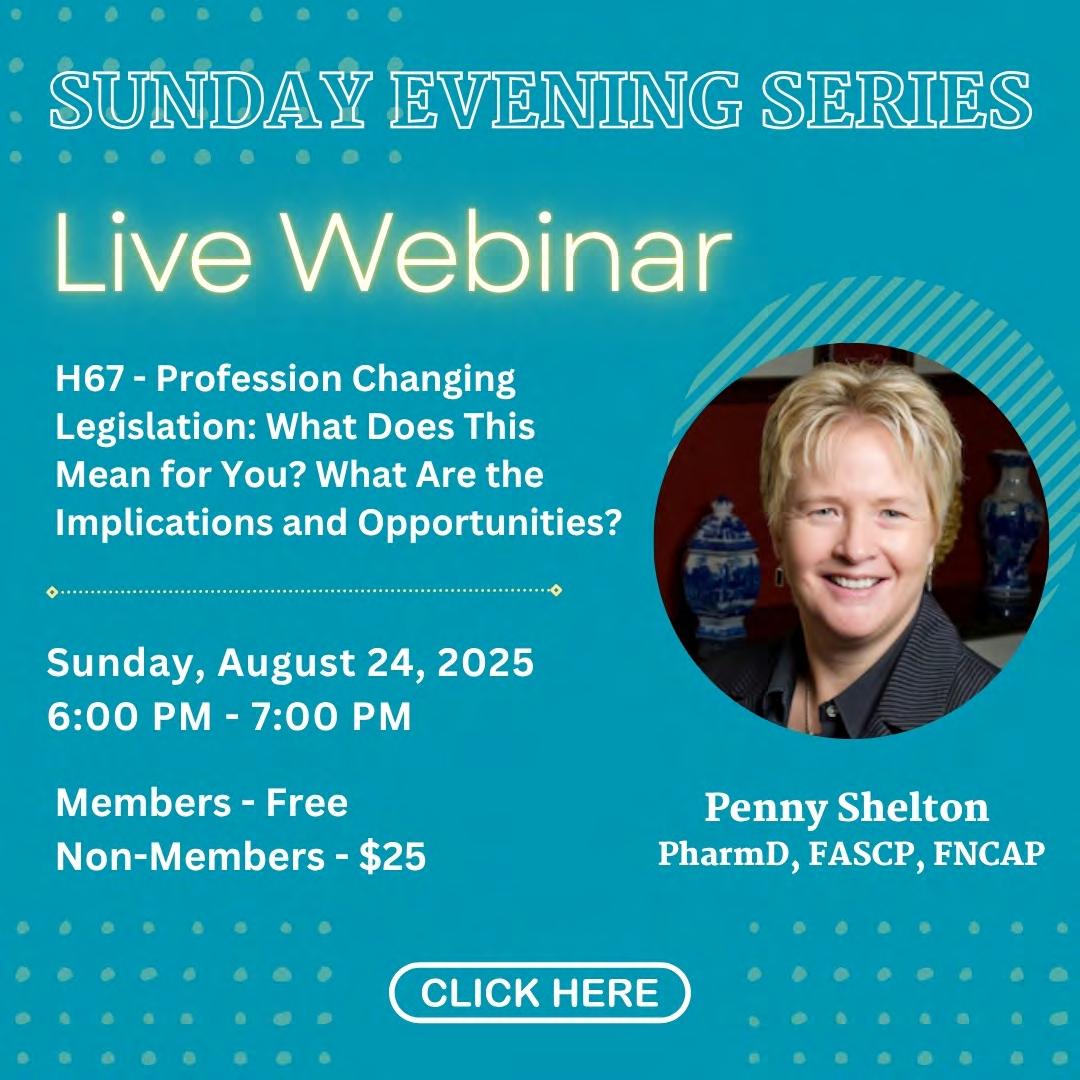
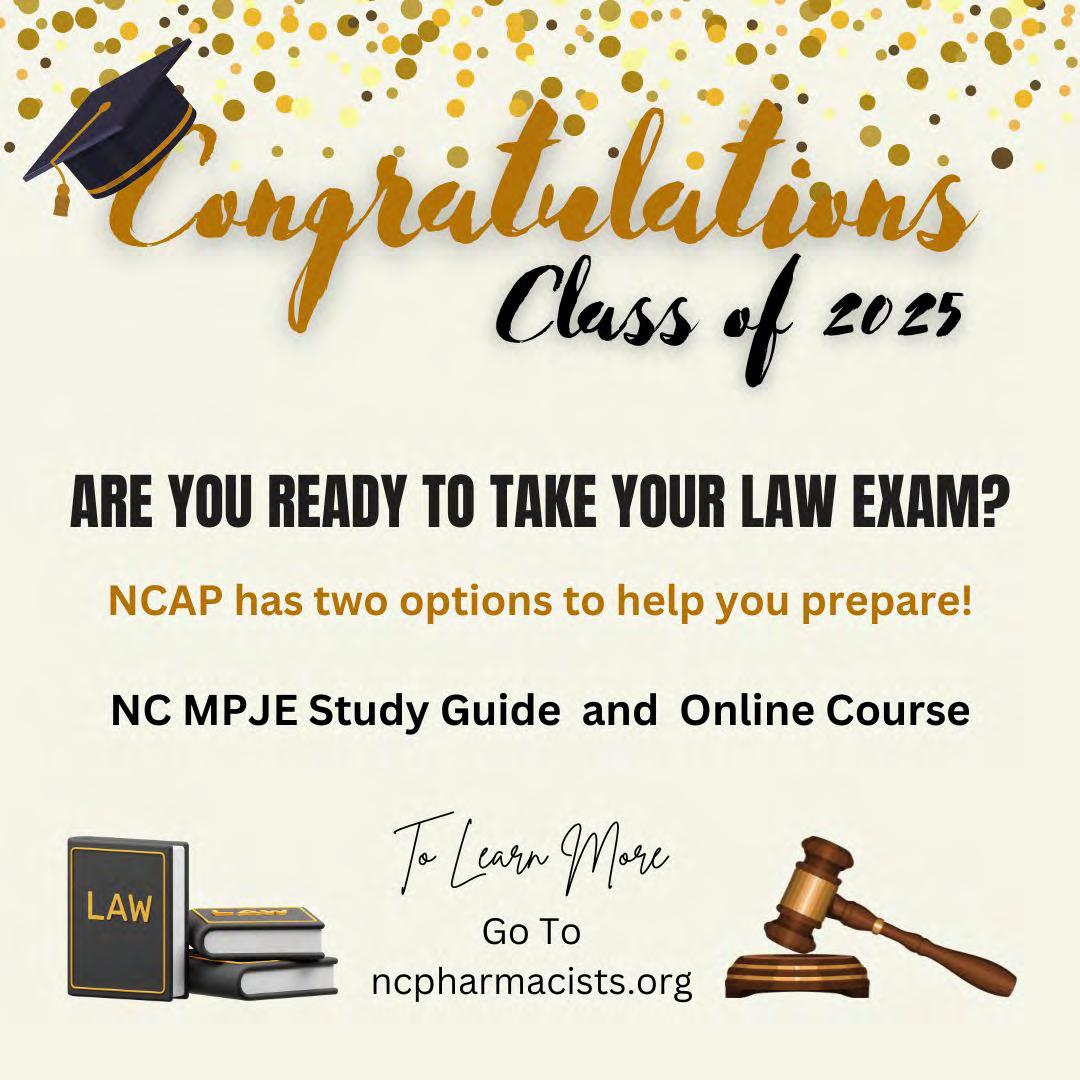
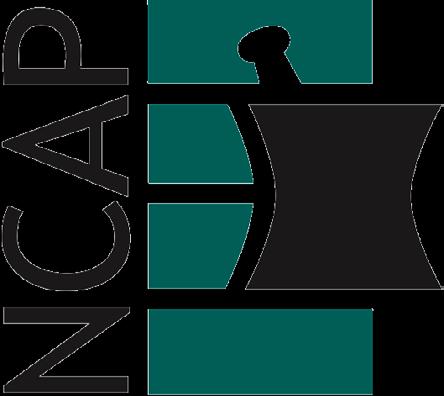

Connecting Top Employers with Premier Professionals.
EMPLOYERS:
Find Your Next Great Hires
• PLACE your job in front of our highly qualified members
• SEARCH our resume database of qualified candidates
• MANAGE jobs and applicant activity right on our site
• LIMIT applicants only to those who are qualified
• FILL your jobs more quickly with great talent
PROFESSIONALS:
• POST a resume or anonymous career profile that leads employers to you
• SEARCH and apply to hundreds of new jobs on the spot by using robust filters
• SET UP efficient job alerts to deliver the latest jobs right to your inbox
• ACCESS career resources, job searching tips and tools NCAP CAREER CENTER
NCAP’s Community AcademyPharmacist Spotlight

Submitted by Lisa Dinkins, PharmD, BCACP
We recently had an opportunity to interview Dr. Wesley Hickman, pharmacist and owner of Hickman’s Pharmacy in Leland, NC. As you read his story below, summarized in his own words, we hope you will be inspired to dream big, embrace innovation, and use your voice!
Background and Career Journey
My journey into pharmacy began in October 1997 when I started working as a pharmacy technician at Revco Drugs in Shallotte, North Carolina. At the time, it was a part-time job after school, and I knew I wanted to go into medicine in some capacity. Pharmacy was my first real exposure to the field, and I quickly fell in love with pharmacology and the interactions I had with patients. In 1999, I began my undergraduate studies at the University of North Carolina at Chapel Hill. As I continued working in pharmacy throughout my college years, I realized that I was more drawn to the pharmacist’s role than to becoming a practicing physician. I appreciated the accessibility pharmacists had with patients and the direct impact they could make every day. In 2001, I was fortunate to be accepted into the UNC School of Pharmacy, and I graduated in 2005 with my Doctor of Pharmacy degree. Over the course of my career, I’ve pursued additional training, including becoming a compounding pharmacist as well as a certified vaccine
trainer.
One of the most influential mentors in my career was Joey Galloway, the owner of Galloway Sands Pharmacy in Supply, North Carolina. Joey was my first pharmacy manager, and he showed me firsthand the importance of patient care, community involvement, and being a trusted, knowledgeable resource for people and their medications. When he branched out into pharmacy ownership in the early 2000s, I admired that bold step and was inspired to follow a similar path. That inspiration stayed with me, and in 2019, I had the opportunity to open my own pharmacy. It was the realization of a long-standing goal and the culmination of years of experience, mentorship, and commitment to serving others.
Regarding influential moments in my career, I have two that come to mind: one personal and one professional. The first moment was the birth of my son, Will, ten years ago. He came into the world ten weeks earlier than expected, and the weeks that followed were some of the most difficult of my life. I realized that no matter what, I had to be
present for my family during their greatest time of need. On day 6 of life, Will’s health took a dramatic turn for the worse. The day before, the doctors decided to put him on a fortified formula instead of the donor breast milk he had been receiving until that point. Within 12 hours, he started hiccupping, but after every hiccup, he would cry out a unique and obviously painful cry. At first, the nurses said it was normal; however, my wife and I were not convinced. The next morning, the medical team let us know that his color was not looking good and they were going to run some tests. When we saw him, nothing could prepare us for seeing our newborn son, who was remarkably healthy (for his age), 24 hours before now look gray and lethargic. We found out a few hours later that his intestines had started to perforate, and he was in the beginning stages of sepsis. He was airlifted to UNC Hospitals, and on the flight from Wilmington to Chapel Hill, his blood pressure began to bottom out. After a sleepless night, multiple blood transfusions, and a lot of prayer, he made it through the next day, and Will began to stabilize. I took a leave of absence to be with my wife and son in Chapel Hill, and during that time, something remarkable happened. Within just two days, two of my patients—people I had helped over the years as their pharmacist and had become good friends with — raised over $15,000 so I could remain by my family’s side. That gesture, completely unprompted, opened my eyes to something I had never fully seen: the true impact I had been making as a pharmacist. All the late-night phone calls, the guidance offered to a worried parent, the quiet conversations with grieving families - these were moments I thought of as just part of my
job. But to my patients, they were much more than that. That experience not only gave me the strength to endure the most frightening chapter of my life but also gave me the confidence to believe in myself. It helped me see that I didn’t need a corporation behind me to make a difference. That realization was the beginning of the dream to open my own pharmacy.
The second defining moment came a few years later, when I shared my story of leaving a large pharmacy chain due to unsafe working conditions. I had kept detailed notes and records, and began posting updates on Reddit during the 11 months it took to go from walking away from my job to opening the doors of my own store. What started as a way to process the journey caught the attention of the New York Times. In the summer of 2019, investigative journalist Ellen Gabler reached out to me while researching the growing safety concerns in retail pharmacy. Because I had documented my experience, I was able to share concrete details and speak truthfully about what pharmacists were enduring. On February 1, 2020, my story appeared on the front page of the New York Times. That moment changed everything, not just for me, but for many others as well. I received messages from pharmacists all over the country who said they felt seen for the first time. That someone had finally said out loud what they had been enduring in silence. I didn’t realize how widespread the struggle had become, but I realized then that I had a voice—and when used with honesty and purpose, it could echo far beyond my own corner of the world.
Those two moments —the birth of my son and the decision to speak out —are the pillars of my career.
One reminded me why we do what we do. The other reminded me that we have the power to change it.
Business Ownership
The decision to open my own pharmacy was rooted in a growing concern over the direction of corporate pharmacy. Over the years, I witnessed firsthand the shift from a patient-centered approach to a profit-driven model in large retail chains. Customer service and accessibility, which should be the cornerstones of pharmacy, were being replaced by unrealistic volume expectations and under-resourced working conditions.
At one point in my career, I was routinely filling over 500 prescriptions a day (with no overlap from a pharmacist), administering 30 to 40 vaccines, and was expected to do so with minimal technician help. Despite repeated requests to leadership for additional staffing to ensure safety and a manageable workflow, I was consistently told no. The turning point came after working two consecutive 13-hour shifts without a break for lunch or dinner, only to be told we couldn’t afford a part-time pharmacist to assist on our busiest day, despite having begged for six months. That moment forced me to draw a line. I broke down the numbers to my district manager, pointing out that our store had generated over $7 million in gross revenue and contributed $1.2 million in net profit to the company. When I was told that $30,000 for additional support wasn’t in the budget, I knew I couldn’t, in good conscience, continue to put my license—and more importantly, my patients—at risk for the sake of corporate margins. That experience was the final push that motivated me to start planning
my exit and opening my own pharmacy.
The greatest challenges I’ve faced in opening and running my own pharmacy include everything from navigating complex payer contracts and shrinking reimbursement rates, to finding out how much control Pharmacy Benefit Managers have in steering patients to stores they own through vertical integration. Starting from scratch required learning the business side of pharmacy on a much deeper level, everything from managing inventory and payroll to marketing and community outreach.
However, those challenges also paved the way for innovation. To adapt, I focused on what large chains had abandoned: personalized care, real access to a pharmacist, and relationships built on trust. We implemented streamlined vaccine programs, expanded clinical services, and leveraged technology to work for us instead of against us, offering better medication synchronization, patient communication tools, and more efficient workflow systems for our staff. We have also expanded into the compounding space that many of the larger pharmacies have abandoned.
More than anything, I’ve learned that community pharmacy still thrives where there’s genuine care, smart adaptation, and a commitment to doing what is right, not just what is profitable. That’s why I opened my own store, and that’s what continues to drive me every day.
Advocacy and Community Engagement
My advocacy work within the North Carolina pharmacy community began almost immediately after I left my position at CVS. Just two weeks
after stepping away, I received a call from a long-time patient who had my personal cell phone number. She was understandably upset—her 16-year-old daughter had been mistakenly dispensed blood pressure medication instead of her allergy prescription. I explained to her, candidly, that this exact type of error was one of the reasons I chose to leave. I had become increasingly uncomfortable with the unsafe working conditions, and I feared that mistakes like this were not just possible, but inevitable. She asked what could be done, and I offered her two options: she could contact the district manager and likely receive a generic apology and maybe a gift card, or she could file a formal report with the North Carolina Board of Pharmacy. I made it clear that if she chose the second route, the board would send an investigator to thoroughly examine the situation. I also emphasized that I wanted to remain entirely hands-off in the decision-making process, to avoid any conflict of interest. In the end, she chose to file the report, and I simply asked that she keep me informed about the outcome. What she experienced through that process reinforced a concern I had long held: although the pharmacist and technician involved were cited with a warning, the permit holder— the corporation—faced no accountability. Even after the board investigator reportedly inquired about the volume of prescriptions dispensed that day, which to me was directly relevant to the root cause, the permit holder walked away unscathed. Long before this, I had contacted the North Carolina Board of Pharmacy while still employed, hoping to understand what authority I had as a pharmacy manager to demand safer staffing levels. I learned then
that the Board could investigate specific incidents but lacked the power to mandate staffing or working conditions. That was disheartening, especially after researching legal precedents—including North Carolina Supreme Court cases— that I believe could be leveraged to pursue stronger patient safety protections if someone were willing to stand up to the corporate pushback. After watching many Board of Pharmacy meetings, I have seen abundant willingness to be aggressive against individual pharmacists (rightfully), however there seems to be an apprehension to take the same fervor to hold the largest corporations in the industry to account for usurping the authority given to the Pharmacy Manager in this state (without the Pharmacy Manager being willing to lose their job). The only difference I see is the amount of money the different parties have to create a legal headache for the Board, or the power to lobby the NC General Assembly for relaxed oversight.
The experience with that young patient’s mother made it clear to me that change would only come from within. It motivated me to seek a seat on the North Carolina Board of Pharmacy, representing the Southeast District. I ran in the 2021 election and came in second. I was also considered during a special appointment process last year, but was not selected. Still, I remain committed. I plan to run again in 2026 because I believe that real, meaningful change can only happen when people who truly understand the challenges of frontline pharmacy are part of the decision-making process.
As part of my advocacy efforts within North Carolina Pharmacy, I have been actively supporting House Bill 163 (as well as HB246 last year), a
critical piece of legislation that recently passed the House and is now awaiting a vote in the Senate. This bill seeks to establish a fair and transparent pharmacy reimbursement model by requiring the use of the National Average Drug Acquisition Cost (NADAC) as the pricing benchmark. For too long, pharmacy benefit managers (PBMs) have utilized opaque and inconsistent pricing indexes—often below the actual acquisition cost of medications—which places independent pharmacies at a financial disadvantage and jeopardizes patient access to care. House Bill 163 represents a step toward equity, sustainability, and accountability in pharmacy reimbursement. Currently, the Senate has passed its own bill, which, in my opinion, is underpowered to address the necessary changes and only helps the PBM industry delay meaningful reform. Delay seems to be the common tactic among some of the bigger players in the pharmacy space and because we have not been able to push good legislation through, I feel that some pharmacist are afraid to fight for the better of the two options because they see the headwinds with one particular powerful member of the Senate who has taken rather large donations from the PBM and Insurance lobbying groups. This level of corruption is more of a reason to fight… not accept the crumbs that we are being offered. In support of HB163 and broader reform, I’ve met personally with Senator Bill Rabon, Representative Charlie Miller, and Representative Heather Rhyne to educate lawmakers on the realities of pharmacy practice, particularly around reimbursement structures. These conversations have focused on the widening gap between the services pharmacists are expected to provide
and the inadequate, often unsustainable, compensation we receive. I’ve also emphasized the growing concern that large chain pharmacies—many of which own or are affiliated with PBMs—are not playing by the same rules. These vertically integrated corporations leverage their monopoly positions to enrich themselves, sidestep transparency, and systematically undermine independent community pharmacies. This behavior doesn’t just threaten our businesses—it threatens patient choice, continuity of care, and access in rural and underserved areas.
To further support efforts to pass House Bill 163, I have participated in closed-door roundtable discussions that included pharmacy benefit manager lobbyists, as well as multiple independent and chain pharmacy owners. These meetings have focused on finding common ground and workable solutions to create a more equitable and transparent reimbursement model. My goal has been to bring all voices to the table—regardless of size or affiliation—to ensure that this legislation can move forward in a way that benefits patients, preserves access, and strengthens the future of pharmacy in North Carolina. Advocacy is essential for pharmacists because our firsthand experiences with patients, insurers, and the healthcare system uniquely position us to identify and address policy shortcomings. When pharmacists engage in advocacy, we amplify the voice of our profession and protect the integrity of patient care. Ultimately, I’ve learned that advocacy isn’t about waiting for permission to speak—it’s about using your voice when it matters most. And I plan to keep doing exactly that.
Impact and Passion: What impact
do you hope to have on your patients and community?
That answer is quite simple: I want to help my patients become healthier and happier.
I want them to be healthier by making sure they’re informed, protected, and cared for. That means taking the time to explain drug interactions, answer questions, and equip them with the best knowledge available so they can make good decisions for themselves and their families. And I want them to be happier by creating a pharmacy environment where they feel welcome, where they see familiar faces, know they’re cared for, and trust us not just as professionals, but as neighbors and friends. Whether someone walks in need of a serious consultation or just wants to share a funny story, I want them to know we’re here for them.
To be honest, I’m afraid for the future of community pharmacy. Through my advocacy work in Raleigh and Washington, D.C., I’ve seen firsthand the outsized influence of pharmacy benefit managers (PBMs) and large insurance corporations. The decisions being made aren’t just about balancing books; they’re about maximizing profits at the expense of patients. When prescriptions are delayed for paperwork or coverage is denied until the “right” rebate is applied, people suffer. And in some cases, I believe lives are lost unnecessarily because access was delayed or denied.
What we’re seeing is a consolidation of power, with PBMs owning pharmacies and creating monopolies that under-reimburse independent pharmacies while overcharging patients. Until those conflicts of interest are dismantled, community pharmacy will remain in crisis.
But I’m not giving up the fight. My passion is fueled every single day by the people who walk through my doors. When a patient says, “Thank you for going the extra mile,” or tells me I made their life just a little bit easier or less stressful—that’s all the motivation I need. What’s meaningful to me is that many of the things we do are just part of what I see as the normal course of our job—helping people, guiding them, listening—and yet it leaves such a big impact. That’s powerful, and it’s deeply rewarding. It reminds me that doing the right thing, even when it takes extra time or we don’t get paid for it, still matters.
Well, if you’ve read this far, it’s probably clear I don’t have a whole lot of free time! I eat, sleep, and breathe pharmacy most days. But when I do step away, I spend it with my family, especially my 10-year-old son. He’s getting into sports, particularly Taekwondo, basketball, and now baseball, so a lot of my free time is spent in the yard playing catch or cheering him on from the stands. That kind of time is irreplaceable. Living near the beach, I also enjoy being on the water. I recently bought a kayak, and I plan to spend every sunny day I can this summer out fishing or heading to Masonboro Island—a quiet, undeveloped spot that helps me reset. And when I need a different kind of peace, I turn to astrophotography. I picked it up a few years ago, and it’s the perfect blend of science and stillness. You can point a telescope at a seemingly empty patch of sky and, after a long exposure, uncover some of the most beautiful structures in the universe. That experience reminds me that even in darkness, beauty exists—you just have to slow down and look for it.
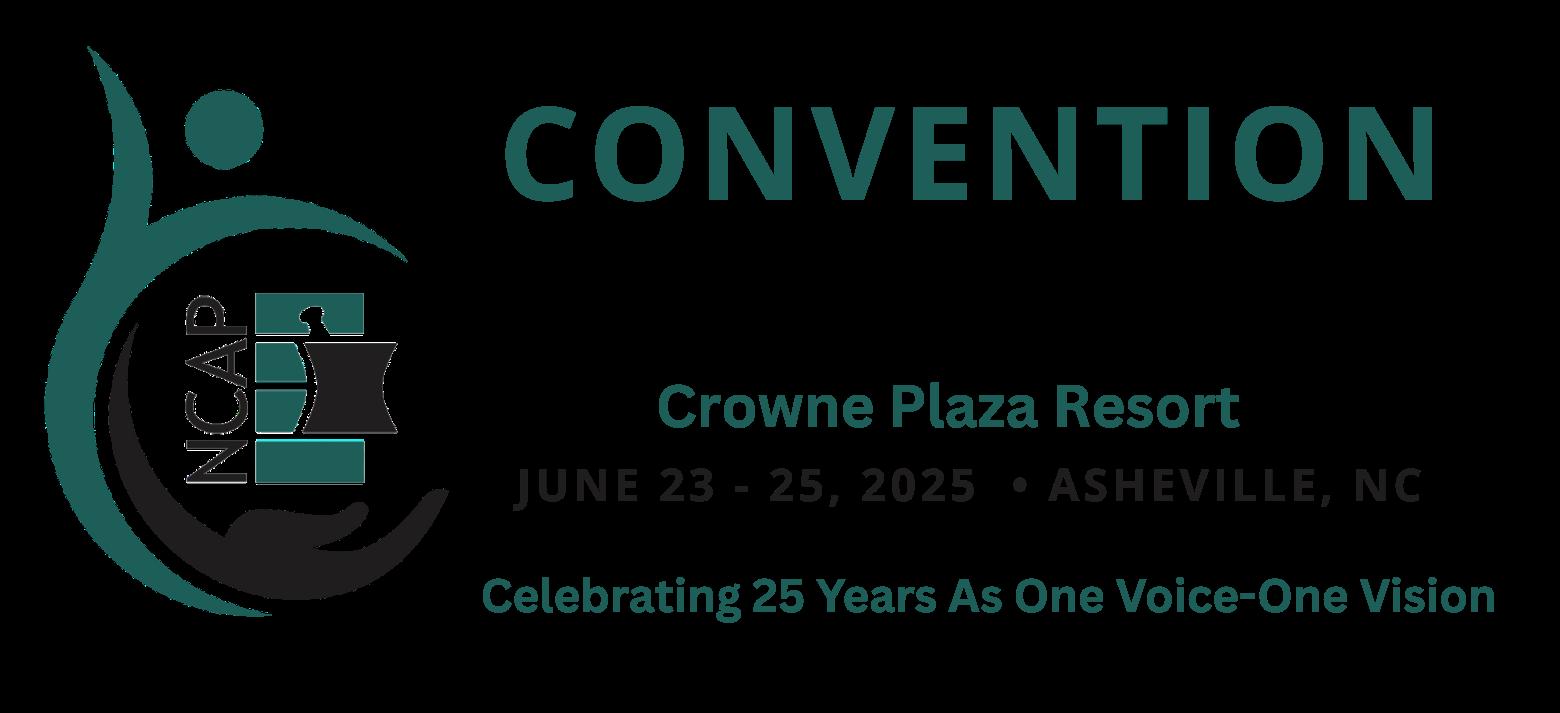
Prioritizing Public Health:
Joining
Forces Across Practice Settings for a Healthier North Carolina
The 2025 NCAP Annual Convention, held June 23–25 at the Crowne Plaza Asheville in Asheville, NC, brought pharmacy professionals together from across the state for two and a half days of continuing education, networking, and celebration. This year’s convention was especially meaningful as NCAP marked 25 years as a unified association.
Day One set the tone with a diverse selection of sessions addressing every practice area—opioid use disorder treatment, long-term care, health-system and hospital pharmacy, ambulatory care, and community pharmacy. Attendees connected with exhibitors and sponsors during lunch while also earning tickets for exciting prize drawings. Many took advantage of the photo booth to commemorate the 25th anniversary with colleagues and friends.
Day Two offered another robust schedule, including presentations on collaborative practice, population health, telehealth and technology, non-traditional practice settings, the essential contributions of pharmacy technicians, and emer-
gency preparedness. The day concluded with the always-anticipated Gala and Awards Dinner, where attendees not only celebrated leaders in the profession but also the passage of long-awaited, profession-changing legislation—making the evening especially memorable.
Day Three wrapped up the convention with a half-day of hands-on instruction and workshops, including gluteal Z-track administration of LAIs, Medicaid provider enrollment and billing, and the latest immunization updates.
As the largest statewide event for pharmacy professionals, the Annual Convention continues to highlight the strength, innovation, and passion of North Carolina’s pharmacy community. NCAP extends deep appreciation to our speakers, attendees, exhibitors, sponsors, and everyone who contributed to this year’s success. Special thanks go to the Convention Planning Committee—Dave Phillips, Dustin Wilson, Dave Sugrue, Kaileigh Yen, Monica Dillingham, Carrie Baker, Mina Wolfe, and Mackie King—
and the 25th Anniversary Planning Committee—Ouita Gatton, William McSkimming, Grace Barr, and Betsy Abbot—for their dedication and vision.
Planning is already underway for the 2026 NCAP Annual Convention, with details and location to be announced soon. We look forward to welcoming you next year for another outstanding gathering of pharmacy professionals!
By The Numbers
Milestone:
25 Years As NCAP
200+ Attendees
30+ CE Hours
25+ Speakers
46+ Exhibitors
5 Platinum Sponsors
4 Product Theaters
9 Silver Sponsors
13+ Awards Presented
Honoring Excellence: 2025 NCAP Awards
The North Carolina Association of Pharmacists (NCAP) is proud to recognize the outstanding achievements and service of its members through the presentation of annual awards. These honors celebrate leadership, innovation, and dedication across all areas of pharmacy practice, as well as the invaluable contributions of students and technicians who strengthen our profession.
At the 2025 NCAP Annual Convention in Asheville, award recipients were recognized before colleagues, mentors, and friends. Each award carries a rich history — from the prestigious Bowl of Hygeia, honoring civic leadership, to the Don Blanton Memorial Award, recognizing advancement of pharmacy in North Carolina, to Academy-specific awards that spotlight excellence in practice settings such as ambulatory care, chronic care, and community care.
While some awards highlight lifetime achievement and service, others encourage new professionals and students to continue shaping the future of pharmacy. This year’s honorees represent a remarkable spectrum of leadership and dedication: seasoned pharmacists who have committed decades to patient care, rising stars who are already making significant impacts early in their careers, and technicians and students who are integral to the future of the profession.
NCAP also paused to reflect on the importance of collective recognition. In lieu of naming a single Health-Systems Pharmacist of the Year, the association honored all health-system pharmacists for their tireless commitment, paying tribute to Helene’s legacy and the enduring impact of those who serve in hospital and health-system practice.
Taken together, the 2025 award recipients exemplify the values that drive NCAP forward: service, innovation, leadership, and community. Their stories remind us that pharmacy is more than a profession — it is a calling to improve the lives of patients and to advance health for all North Carolinians.
Congratulations to each of this year’s awardees. Your contributions inspire us all.
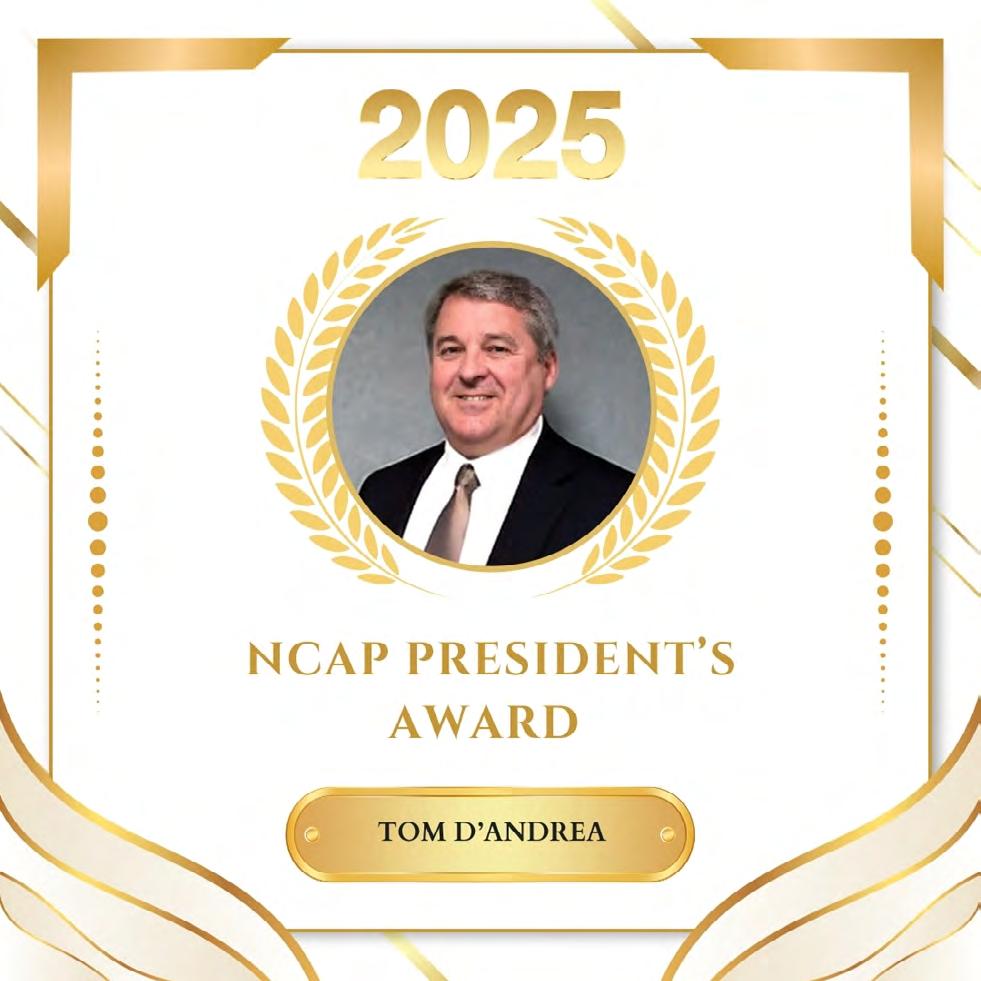
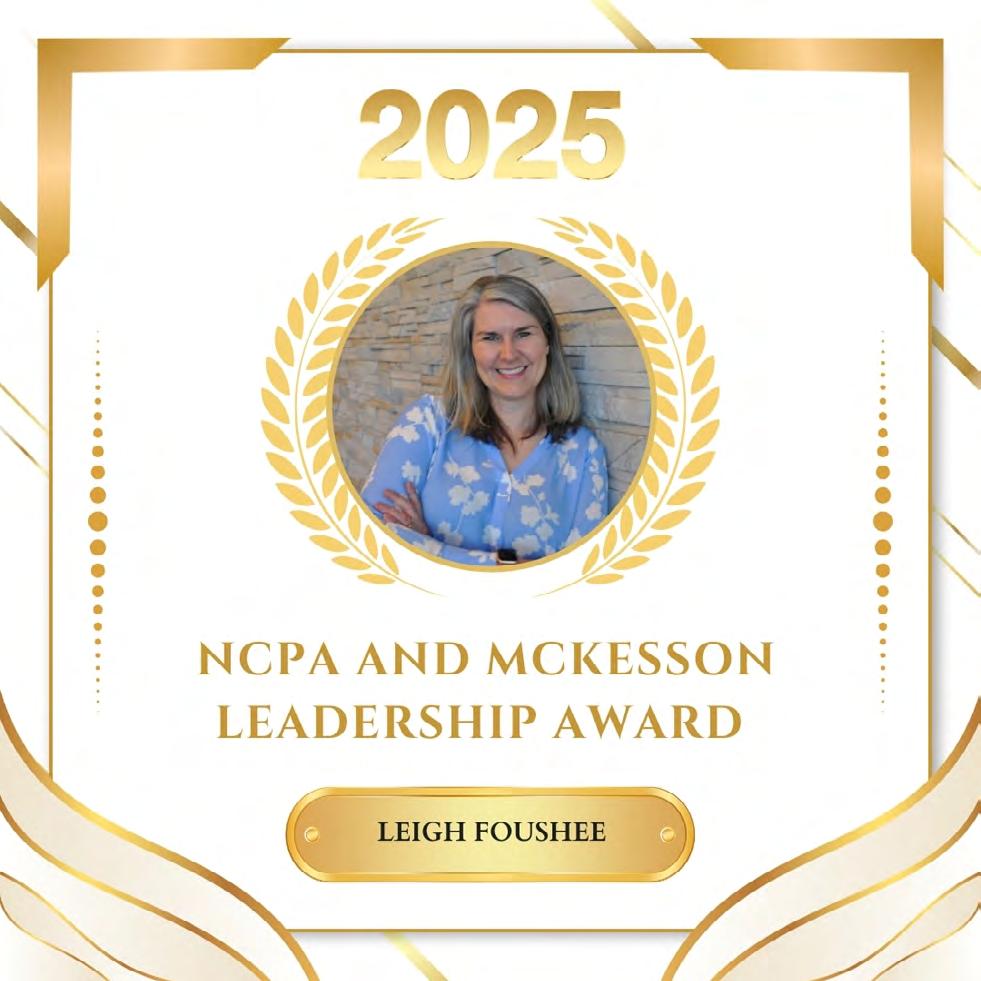
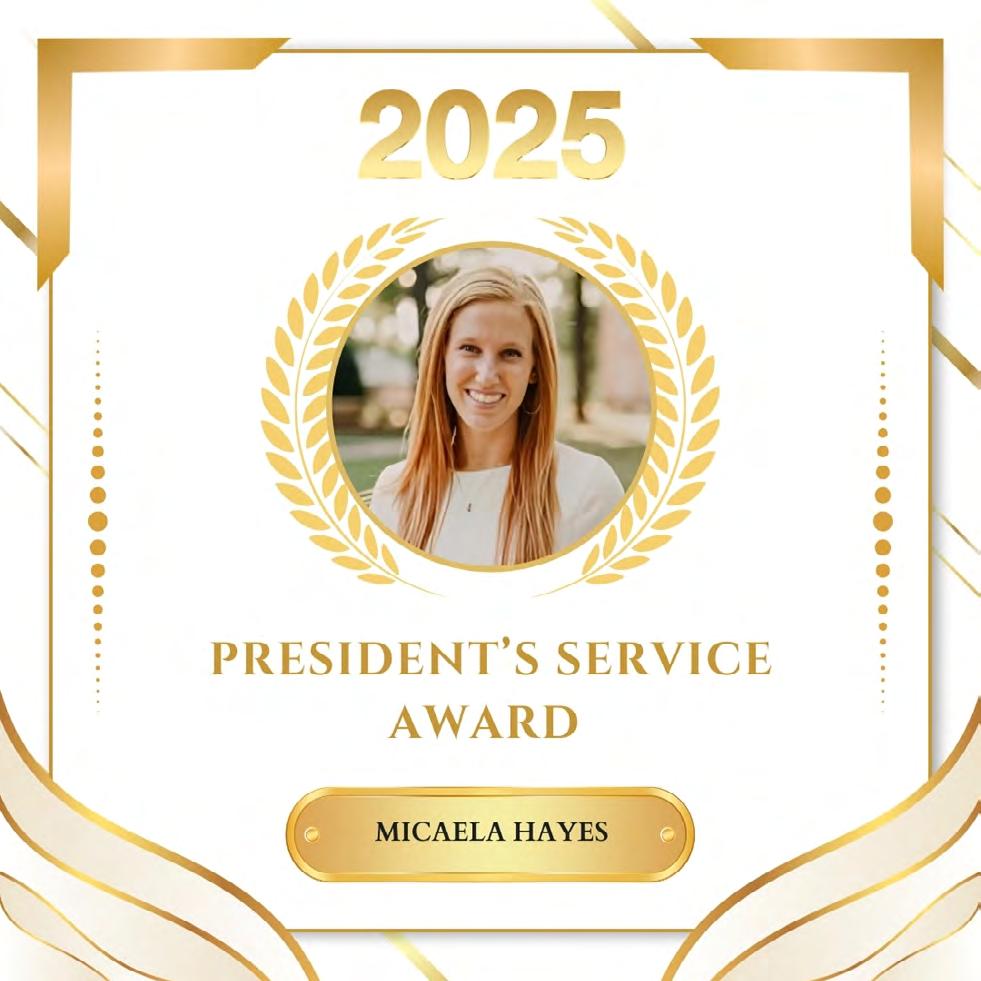

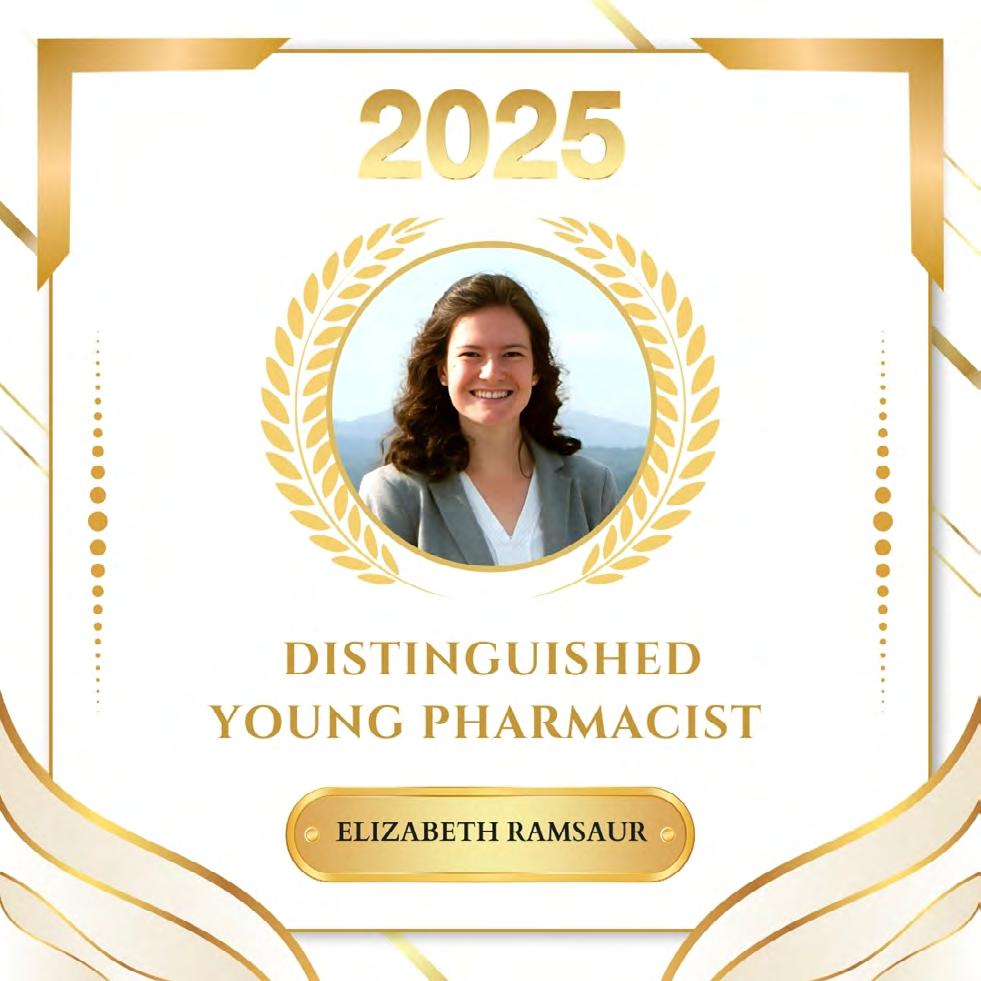
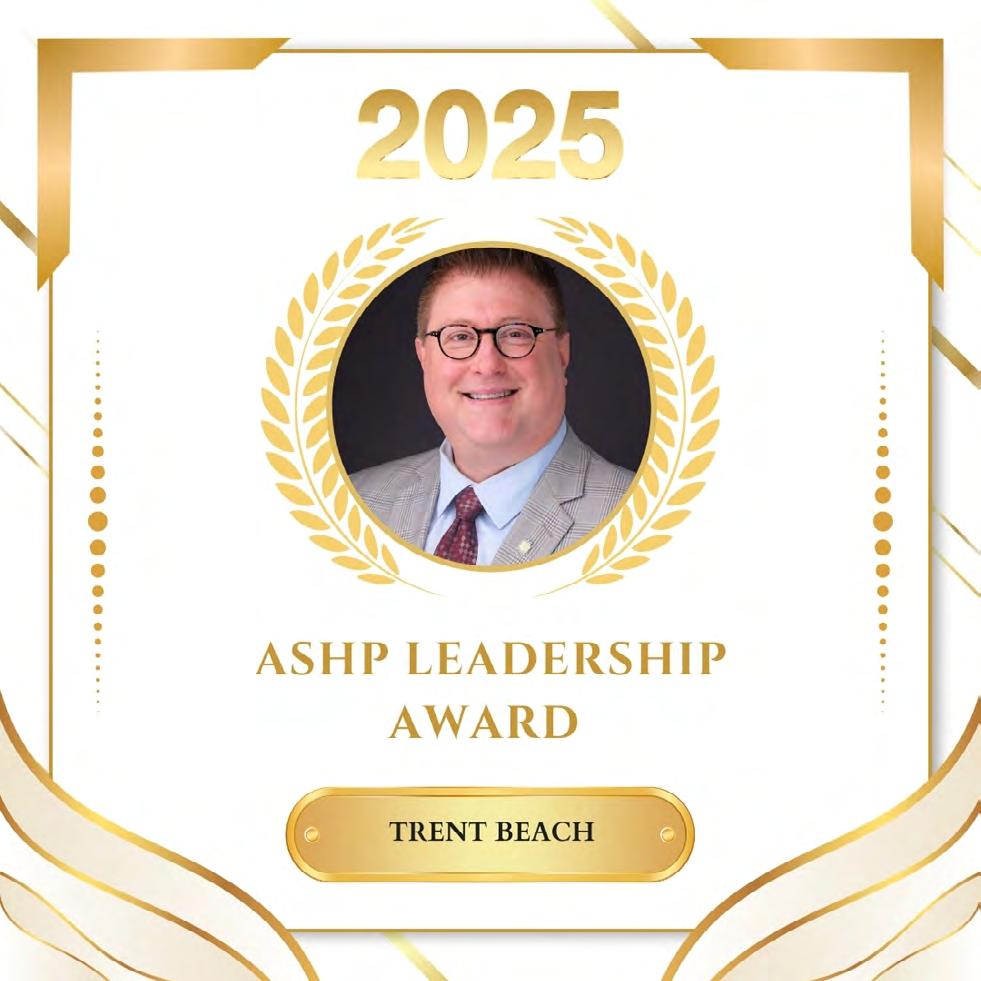

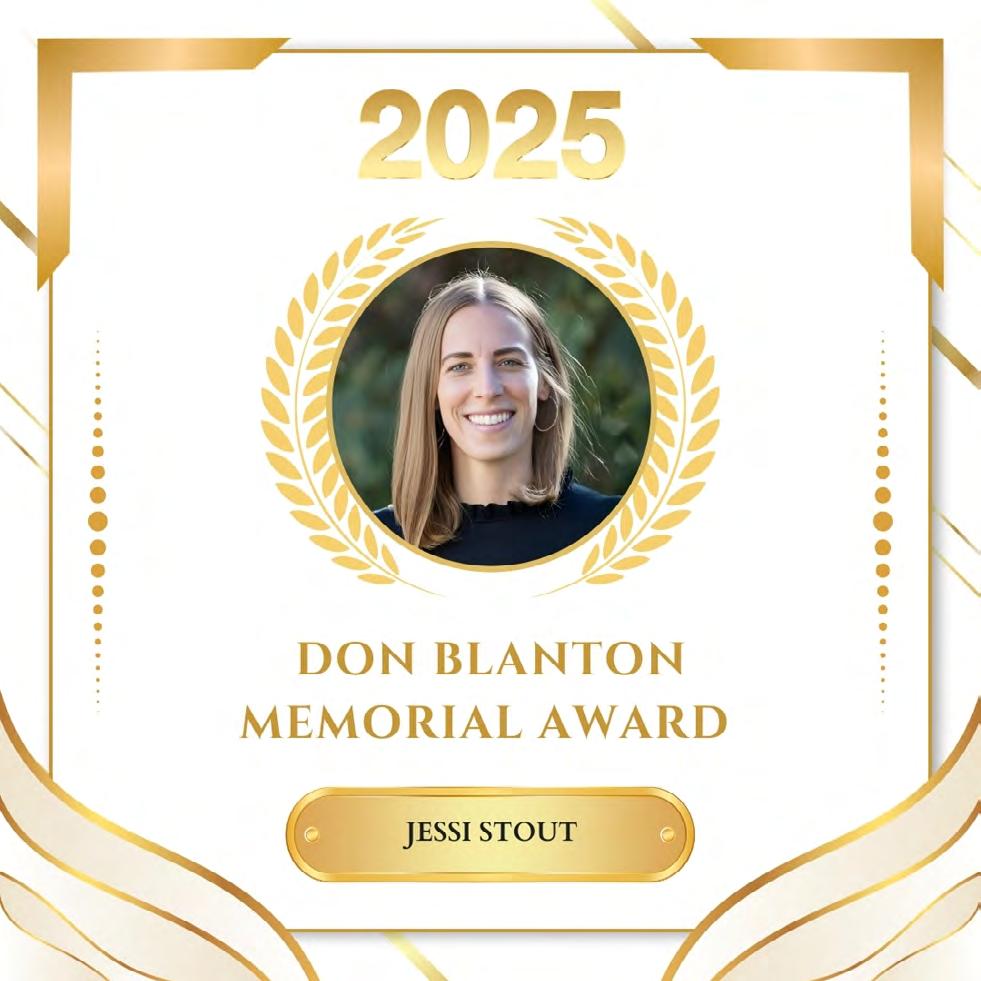
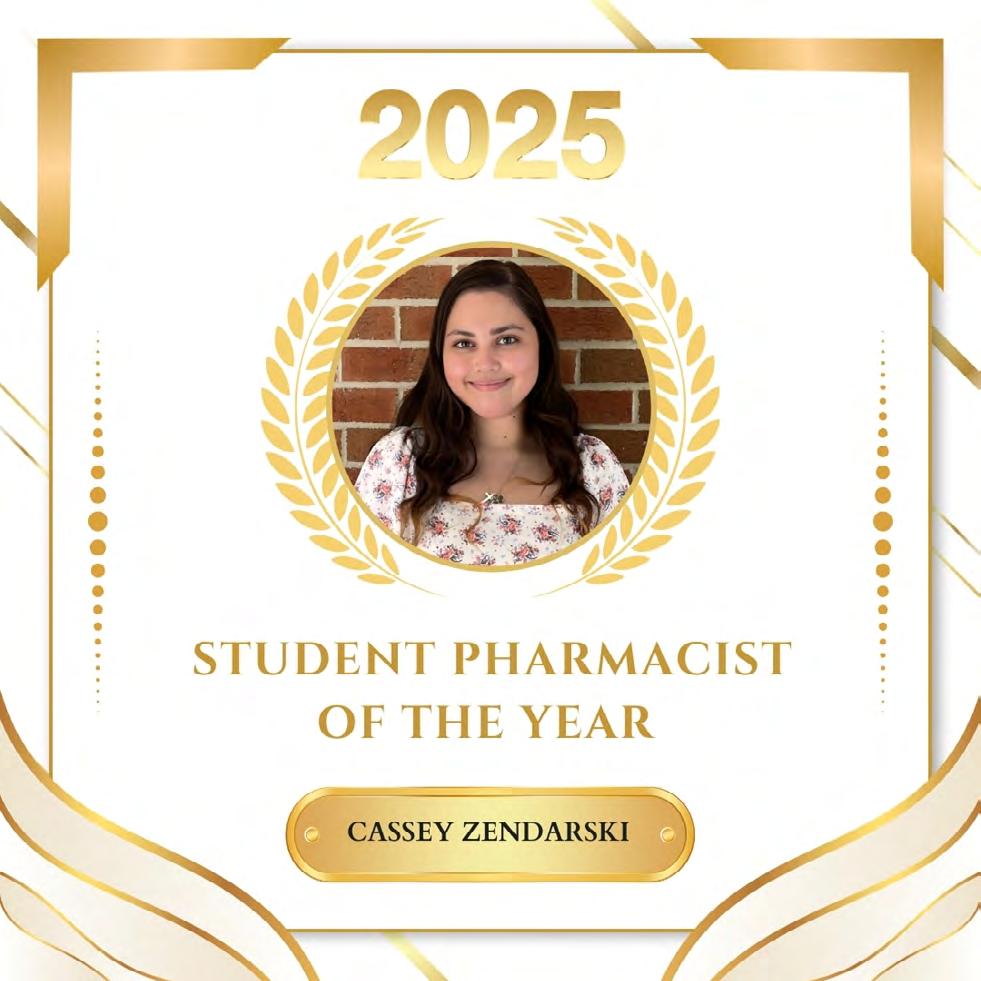
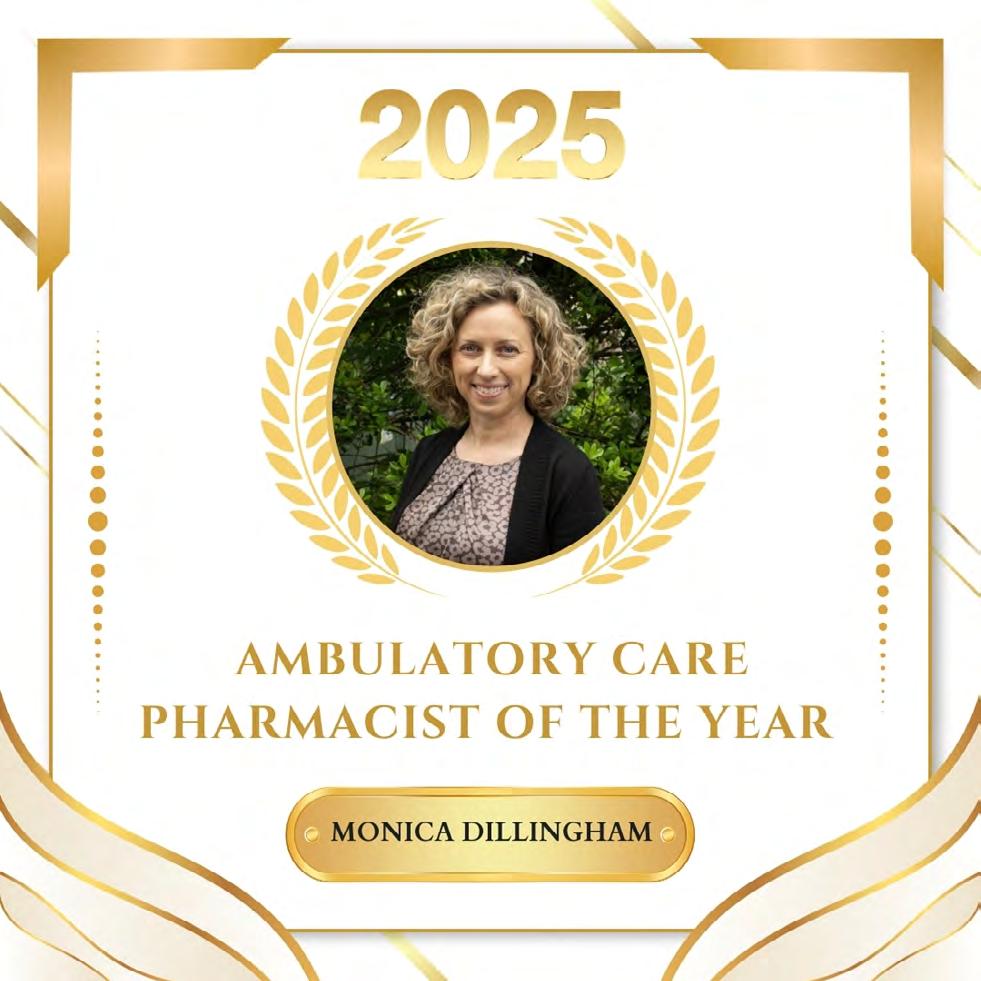
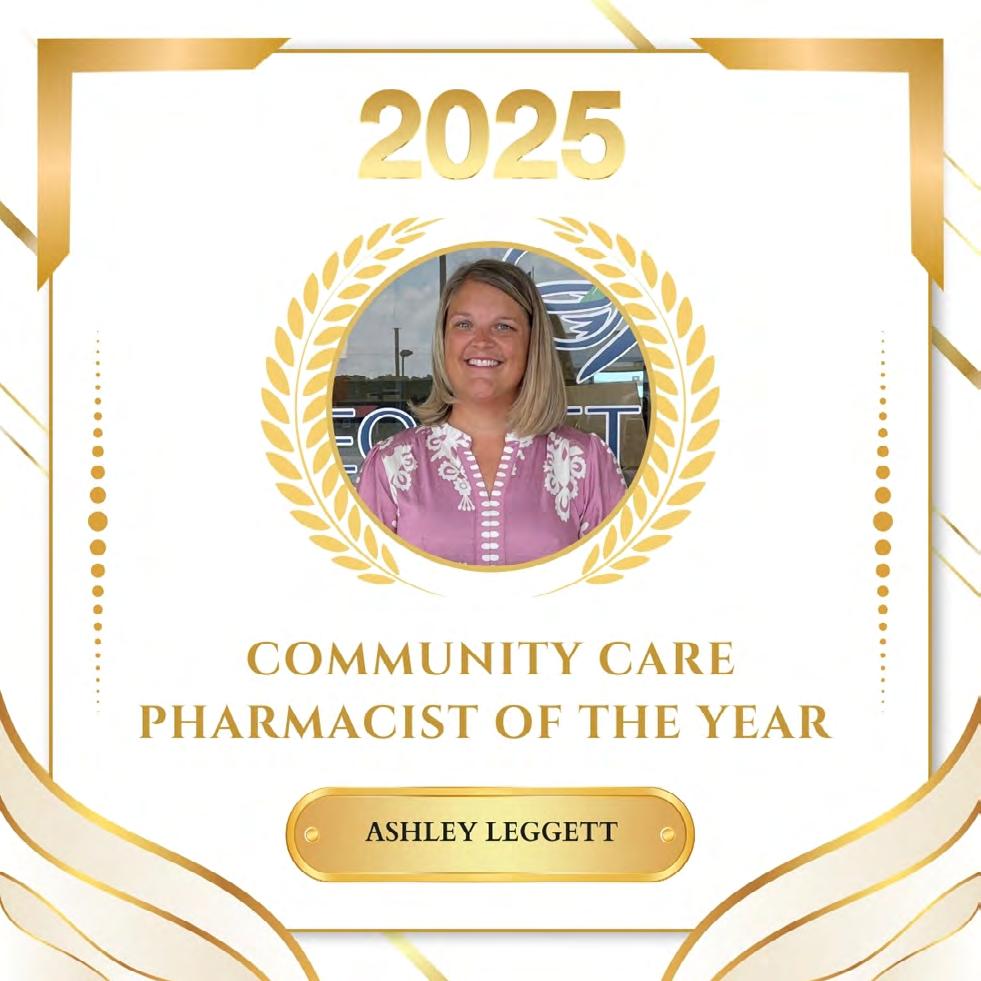
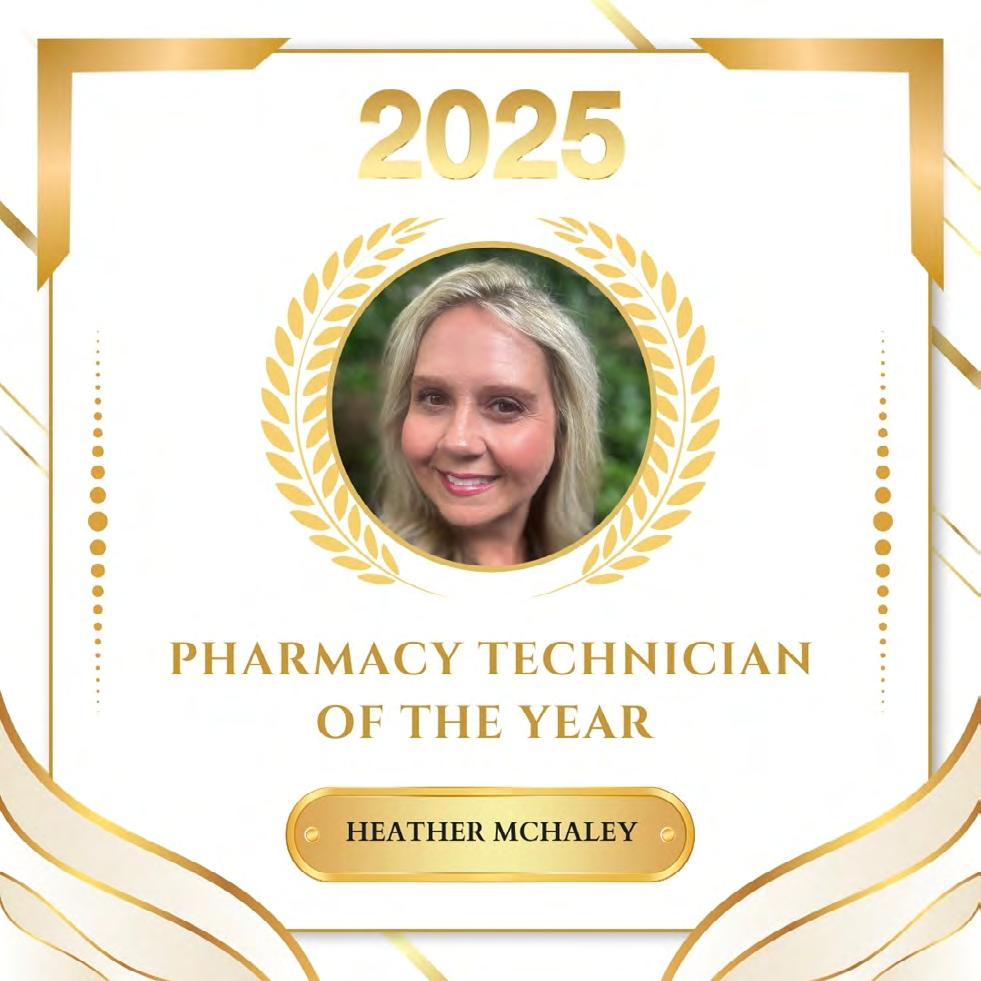
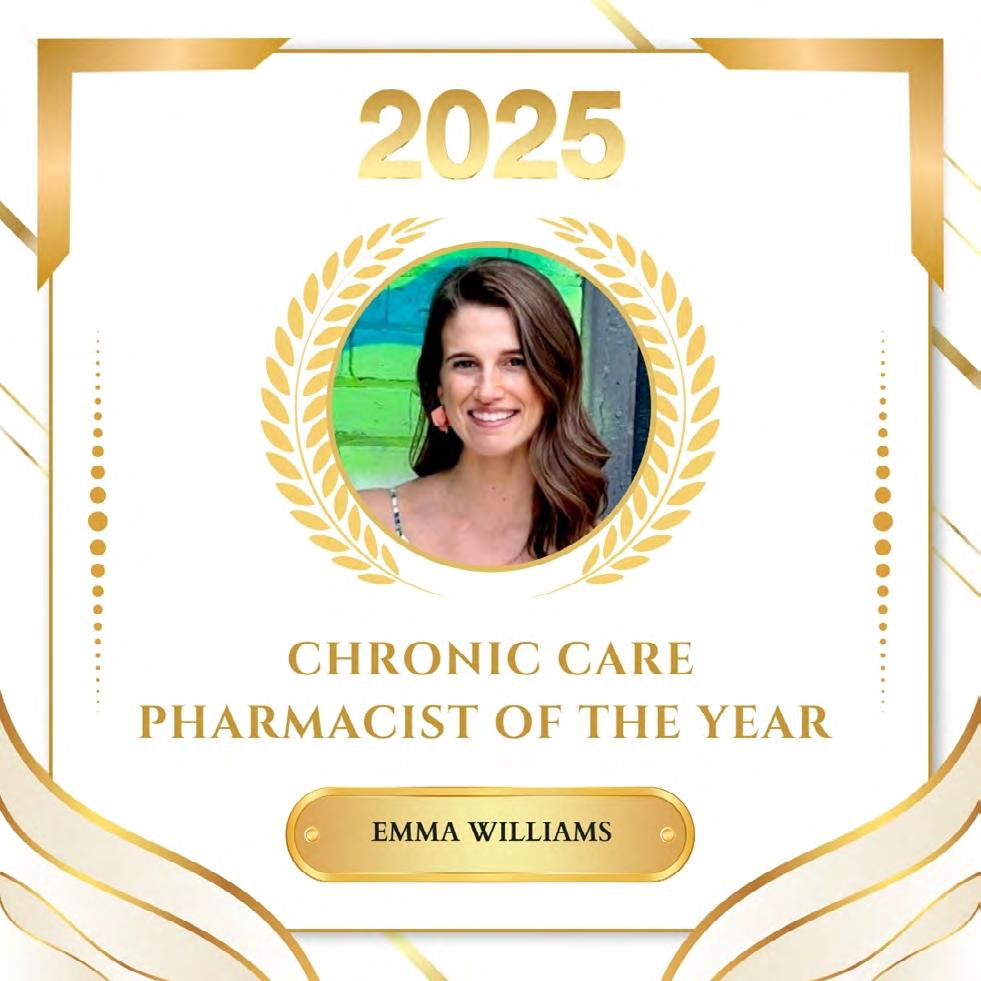
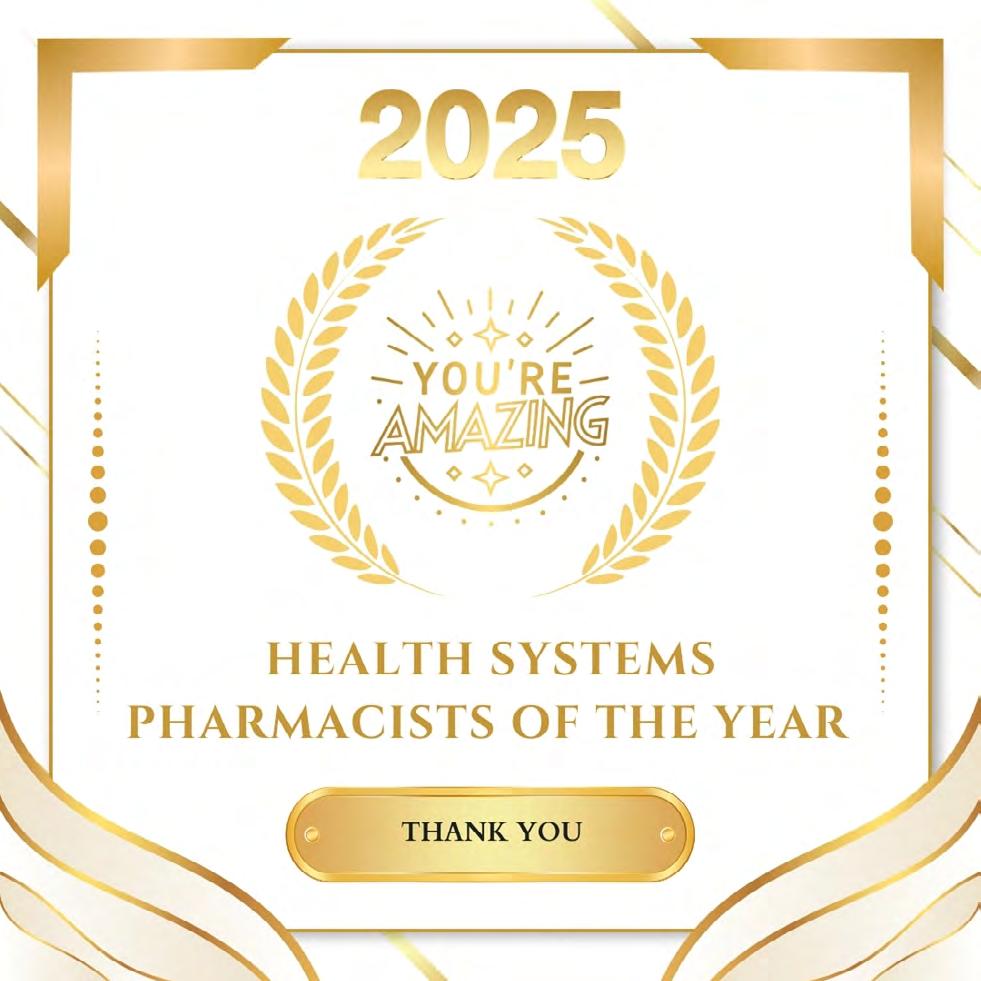
2025 FNCAP Recipients



2025 FNCAP Recipient: Melissa “Lisa” Dinkins
NCAP proudly recognizes Melissa “Lisa” Dinkins, PharmD, BCPS, CPP, of Wingate, NC, as the 2025 FNCAP Award Recipient.
Dr. Dinkins serves as Director of Community Health Outreach and Professor of Pharmacy at Wingate University School of Pharmacy. She is widely respected for her leadership in community health and her dedication to educating future pharmacists.
Congratulations to Dr. Dinkins on this well-deserved honor!
2025 FNCAP Recipient: Tasha Woodall
NCAP is honored to recognize Tasha Woodall, PharmD, BCACP, CPP, of Horseshoe, NC, as a 2025 FNCAP Award Recipient.
Dr. Woodall serves as Co-Director of the MAHEC Center for Healthy Aging and Associate Professor of Clinical Education with the UNC Eshelman School of Pharmacy. She is celebrated for her commitment to advancing care for older adults and for her leadership in clinical education.
Congratulations to Dr. Woodall on this outstanding achievement!
2025 FNCAP Recipient: Jeff Reichard
NCAP is pleased to recognize Jeff Reichard, PharmD, of Cary, NC, as a 2025 FNCAP Award Recipient.
Dr. Reichard serves as Executive Director of Pharmacy, Acute Care & Supply Chain Pharmacy Services with UNC Health. He is recognized for his leadership in health system pharmacy, ensuring safe, efficient, and innovative care delivery across the state.
Congratulations to Dr. Reichard on this well-deserved honor!
Thank You to Our Sponsors and Exhibitors
Each year, NCAP’s Annual Convention comes to life not only through the energy and dedication of our members, but also through the incredible support of our sponsors and exhibitors. Their commitment makes it possible for us to provide high-quality continuing education, networking opportunities, and meaningful celebrations that strengthen our profession.
Our sponsors help us enhance programming, create engaging experiences, and recognize excellence in pharmacy. Our exhibitors bring innovation and resources directly to attendees, sparking conversations that extend far beyond the convention hall. Together, they play a vital role in ensuring our event is a success.
On behalf of the NCAP Board, staff, and members, we extend our heartfelt thanks to every sponsor and exhibitor who partnered with us this year. Your support not only enriches our convention, but also helps advance pharmacy practice across North Carolina. We are grateful for your continued investment in our profession and look forward to building on this collaboration in the years ahead.
Platinum Sponsors
Amgen
McKesson Amplify Merck
Novo Nordisk
Pharmacist Mutual Insurance Company
Rpharmy
Silver
Sponsors
Alexion Pharmaceuticals
American Regent
Bayer
Boehringer Ingelheim
i-Health, Inc
LTC@H Pharmacy Network
NC Department of Insurance – SHIIP & NCSMP
Pfizer
Walgreens
Exhbitors
Association of North Carolina Boards of Health
Astellas Pharma
AstraZeneca
Azurity Pharmaceuticals
Biltmore
Cencora
CMP Pharma
Courier Express
CPESN North Carolina
Daiichi Sankyo, Inc.
eBoxchain
Fagron Sterile Services
Fresenius Kabi
GSK
Hema Biologics
Johnson and Johnson
Kedrion BioPharma
Lilly
Limited Income NET Program
Mallinckrodt Pharmaceuticals
Meitheal Pharmaceuticals
Moderna
Mutual Drug
Novo Nordisk
Pfizer Rare Disease
Protega Pharma
RURAL-CP
Smith Drugs
Teva Pharmaceuticals USA
Theravance Biopharma
Truentity Health
Vertex
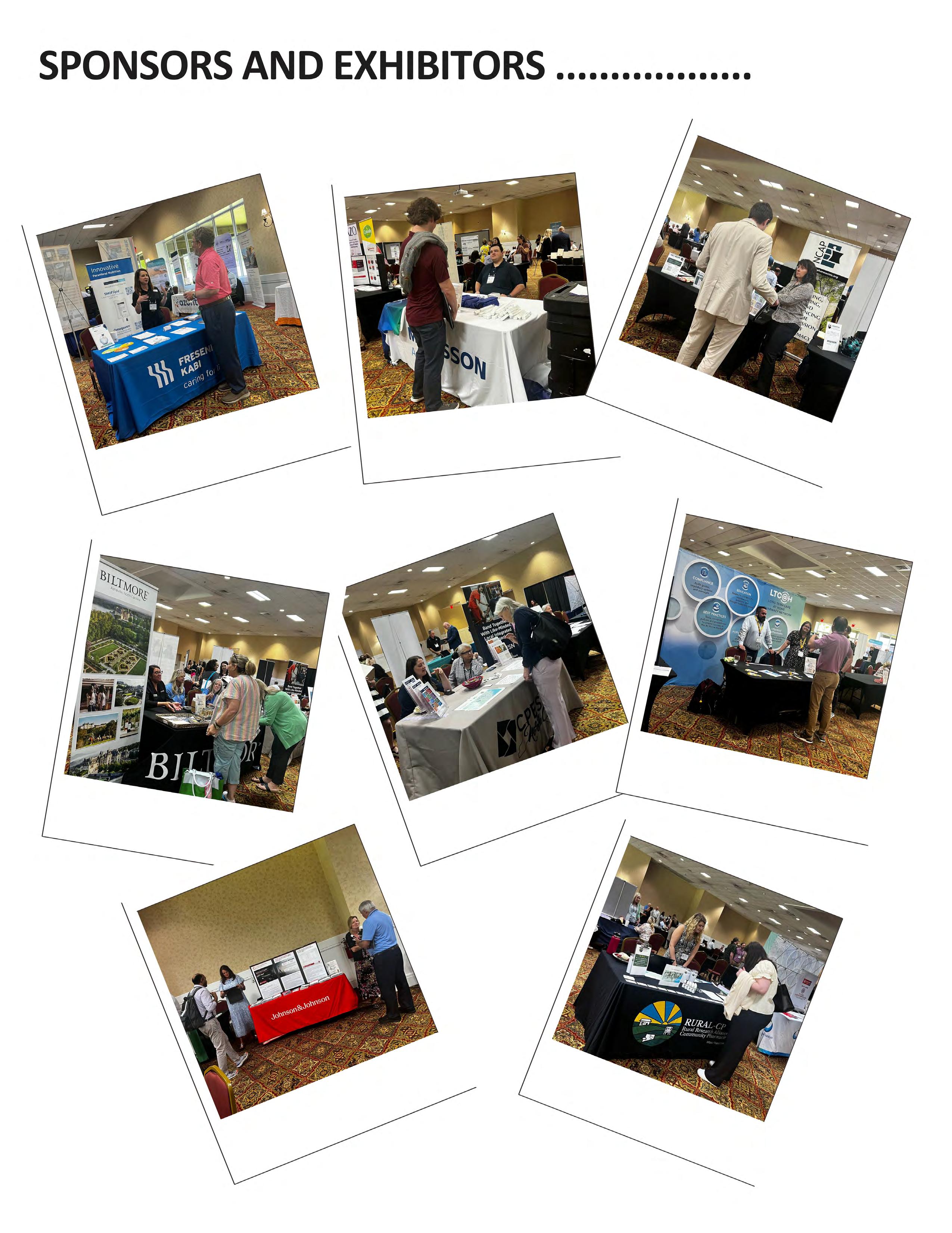
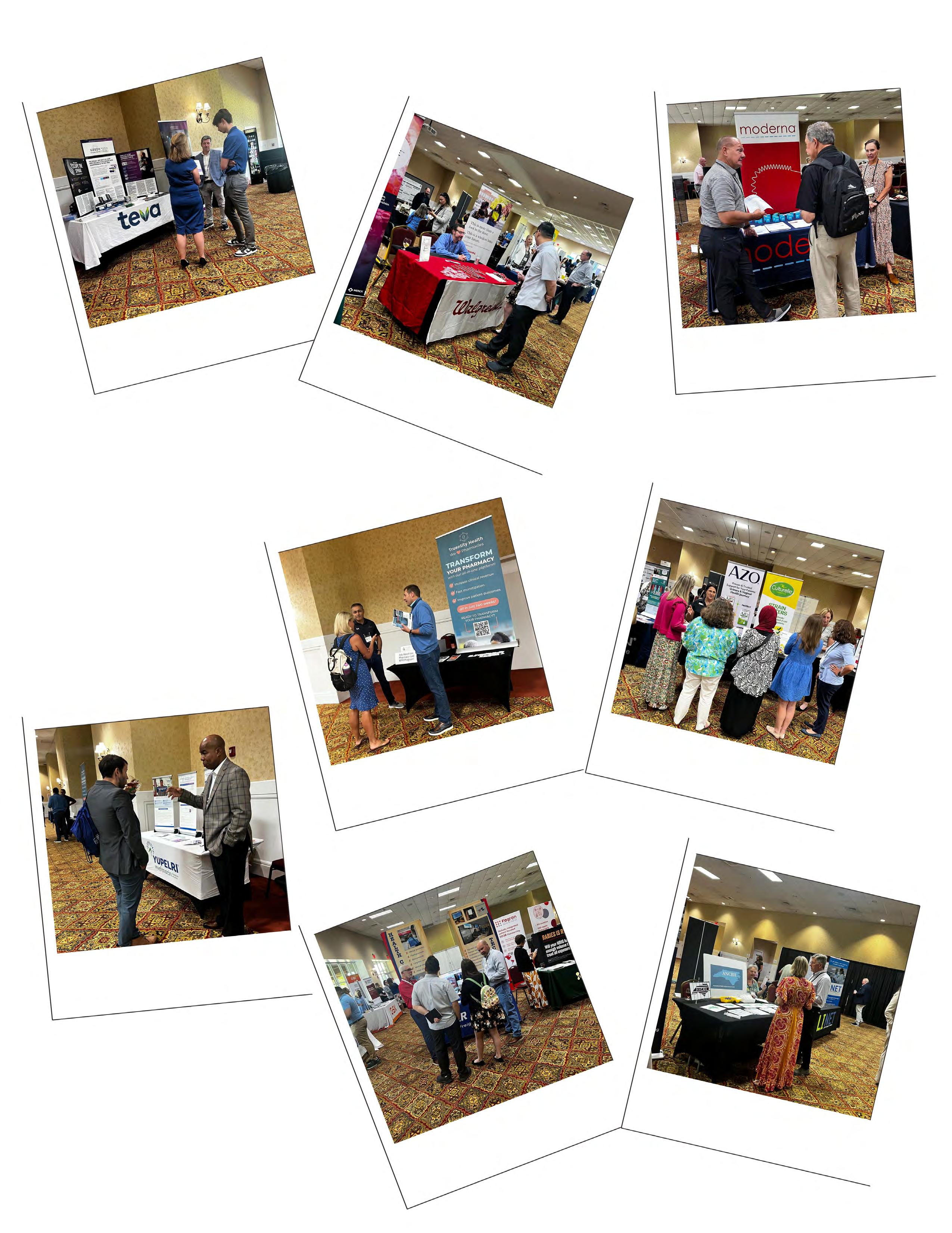

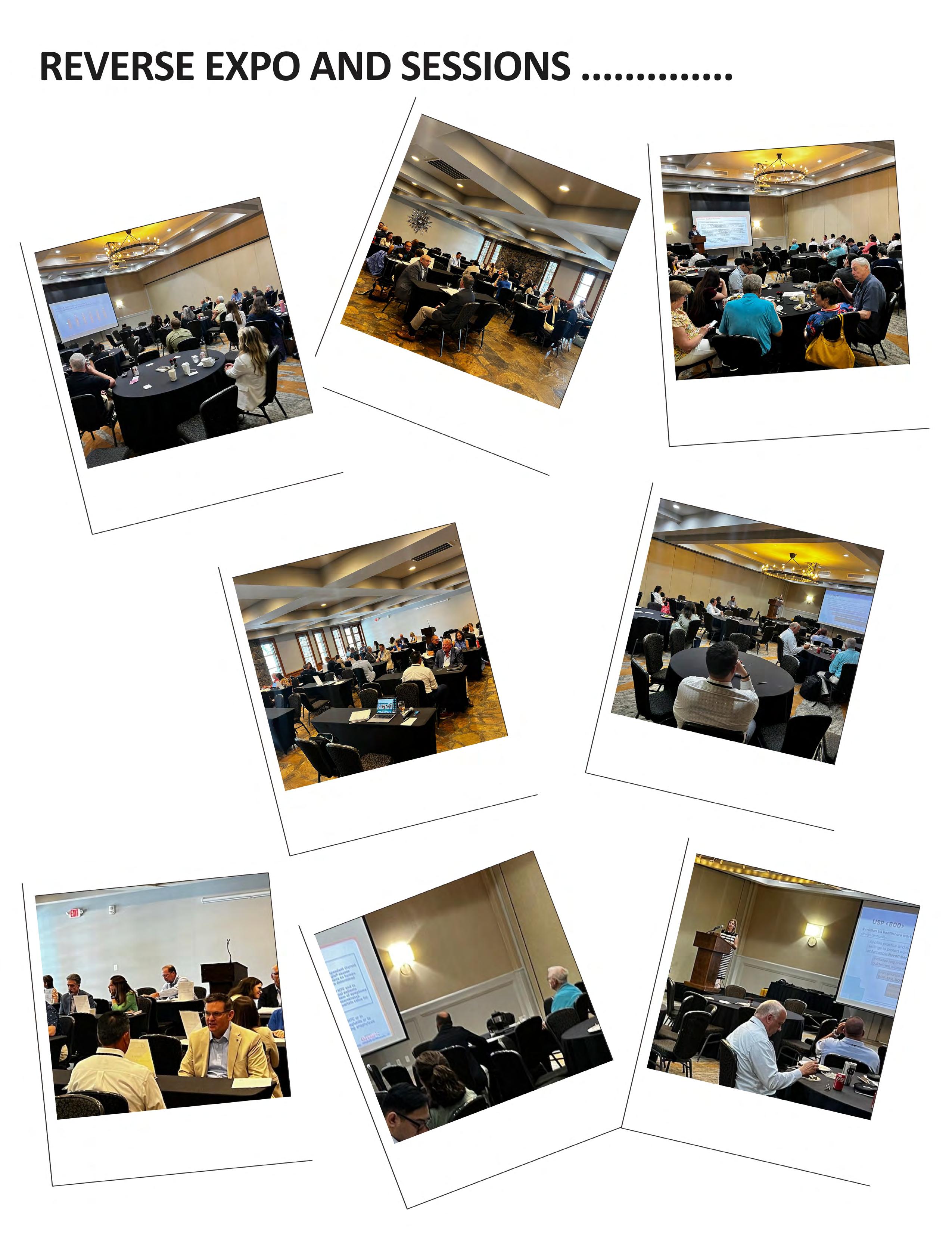


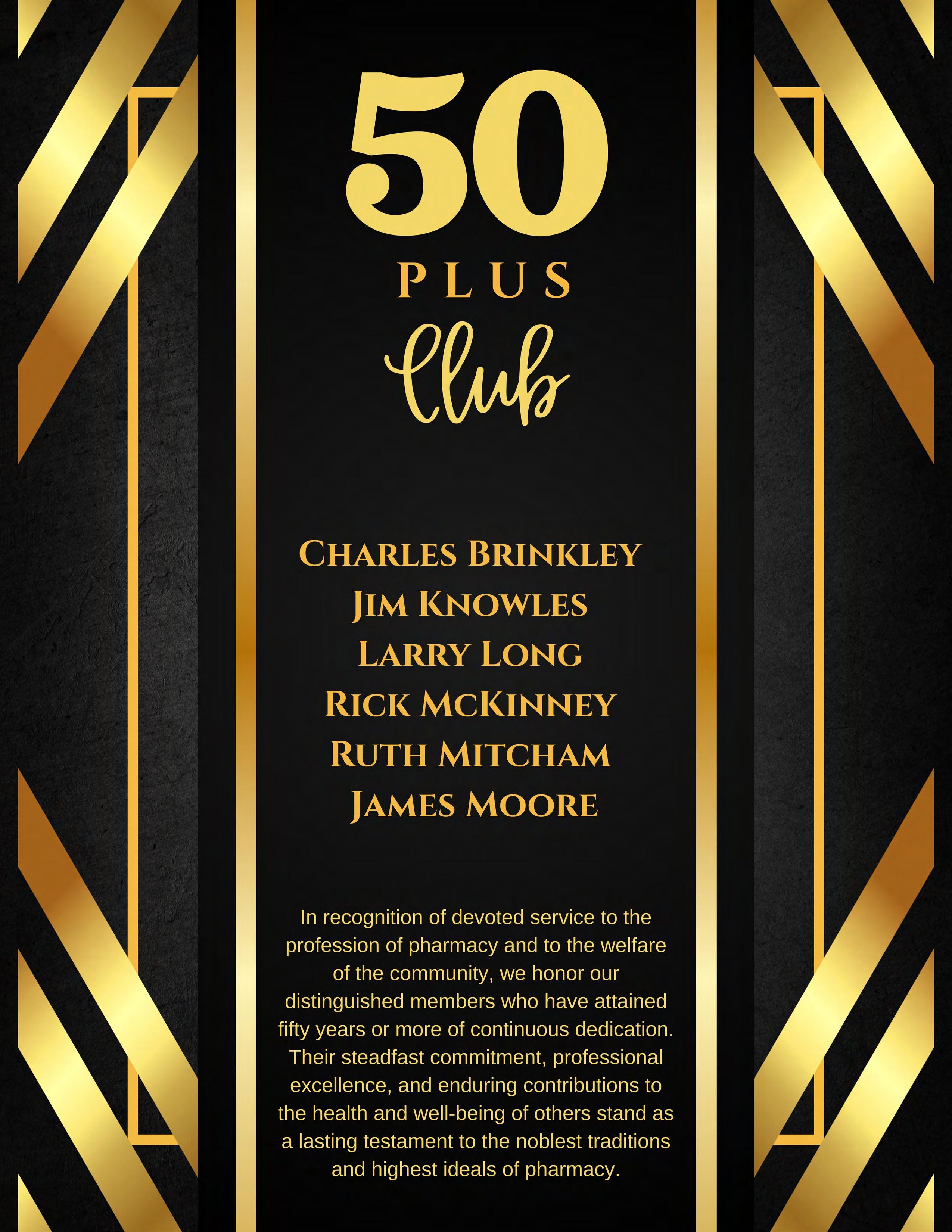
Poster Session: Abstracts
Poster 1
Title: Enhancing Harm Reduction: Lessons Learned from Partnering Syringe Service Programs with Community Pharmacies in North Carolina
Author:
Cheryl Viracola, PharmD
Objective: From 2000–2023, over 41,500 North Carolinians lost their lives to drug overdose, with an average of 12 deaths daily in 2023. The CDC considers Syringe service programs (SSPs) evidence-based strategies for overdose prevention linked to a 50% reduction in HIV/ HCV incidence. They provide sterile injection equipment, syringe disposal, disease testing, education, and treatment referrals. North Carolina legalized SSPs in 2016 (G.S. 90113.27), and today, 50 SSPs serve 62 counties. However, barriers such as limited geographic reach and operating hours persist. The North Carolina Association of Pharmacists (NCAP) received grant funding from the Governor’s Institute to explore pharmacies as SSP extension sites, aiming to improve access and reduce stigma.
Methods: NCAP recruited four SSPs and seven pharmacies across four counties to assess interest in collaboration. If both parties agreed, a virtual meeting was held to discuss implementation. A launch date was then set for supply handoff and distribution of educational materials. Each pharmacy tracked unique patients served, SSP kits distributed,
and referrals made for additional harm reduction resources.
Results: As of Q2 2025, the threeyear pilot has demonstrated the effectiveness of pharmacies as SSP extension sites, serving 433 unique patients, distributing 1,154 kits, and facilitating 176 SSP referrals— marking year-over-year increases of 260%, 319%, and 274%, respectively. Data collection is ongoing.
Conclusion: Community pharmacies have proven essential in expanding harm reduction services as SSP extension sites. All participating SSPs and pharmacies sustained and expanded their programs beyond the grant cycle. Further scaling efforts in high-risk counties could enhance access and impact.
Poster 2
Title: Community Pharmacy-Based Psychotropic Long-Acting Injectable (LAI) Service Reimbursement
Authors: Mina Wolfe, PharmD1; Jerry McKee, PharmD, MS, BCCP2; Vera Reinstein, PharmD, BCPS3
Institution: 1University of North Carolina at Chapel Hill, Chapel Hill, NC; 2North Carolina Association of Pharmacists, Durham, NC; 3Alliance Health, Morrisville, NC
Objective: Since October 1, 2021, North Carolina pharmacists have been authorized to administer long-acting injectables (LAIs) to adults with a prescription. However, few pharmacies currently pro-
vide this service. To address this gap, the North Carolina Association of Pharmacists received a grant from Alliance Health to expand community pharmacy services that support individuals with serious mental illness and/or substance use disorder. The first community pharmacy service studied is focused on improving access to LAI psychotropics, including antipsychotics and medications for opioid use disorder. The project aims to develop and present to payors a scalable, equitable, and sustainable payment model for pharmacy-based LAI administration. Additional objectives include increasing treatment capacity, reducing medication waste, and identifying patients who may benefit from LAIs due to challenges with oral medication adherence.
Methods: Nine community pharmacies across North Carolina were selected based on claims data and team interviews. After completing a live training webinar, participating pharmacies used an online platform to document time spent on LAI service components and ensure quality assurance. Tracked activities included obtaining informed consent, preparing materials and injections, assessing clinical appropriateness, administering the product, and communicating with providers (including follow-up for missed appointments). A micro-costing analysis is being conducted to inform payment model development based on time, service components, and personnel involved.
Results: Between June 1 and Sep-
tember 30, 2024, 614 LAI administration events were documented, exceeding the target of 500. Collected data and micro-costing analysis will inform the design of a viable payment model.
Conclusions: Community pharmacy-based LAI administration is an underutilized service with strong potential to improve outcomes for patients with serious mental illness and/or substance use disorder. This project demonstrates feasibility, highlights the need for sustainable reimbursement, and promotes pharmacist-psychiatrist collaboration—especially within telepsychiatry models—to enhance access and adherence to evidence-based treatment.
Poster 3
Title: Evaluating the availability of no-cost naloxone in Eastern and Southeastern Area Health Education Center (AHEC) Regions of North Carolina
Authors: Grace Marley PharmD, Caroline Shubel MPh, Bayla Ostrach PhD, MA, CIP, Delesha Carpenter PhD, MSPh
Introduction: High costs continue to limit naloxone accessibility for many patients, so pharmacists should know of local no-cost naloxone distributors. This survey aimed to identify and evaluate no-cost naloxone distribution in Eastern and Southeastern AHEC regions of North Carolina.
Methods: An online Qualtrics survey was distributed from June 2023 to January 2024 to all identified nocost naloxone distributors in North Carolina. A community advisory
panel helped identify the contact list. The survey gauged program type, demographics served, and locations of naloxone distribution. Descriptive statistics and mapping functions were utilized to evaluate no-cost naloxone distribution.
Results: Fifty-one no-cost naloxone distributors were identified in Eastern and Southeastern AHEC counties (41, 10, respectively). Identified programs included: Health Departments (n=19), treatment programs/centers (n=10), syringe service programs (N=9), EMS/ Community Paramedicine/ Post Overdose Response Teams (PORT) (N=7), justice-involved programs (N=6), among others. Programs reported distributing no-cost naloxone often to non-Hispanic white (3.65, 0.69), Black (3.37, 0.81), and Hispanic or Latino (2.76, 0.93) populations, and less often to American Indian or Alaska Native (1.96, 0.84), and Asian populations (1.76, 0.86). Most programs reported distribution to people who use drugs (N=48) and individuals with a history of substance use disorder (N=48); fewer programs reported distributing to individuals leaving treatment/detox (N=34), and pregnant people who use drugs (n=38).
Conclusion: This research indicates no-cost naloxone distributors in Eastern NC are distributing less frequently to Native American or Alaska Native patients, pregnant people who use drugs, and individuals leaving treatment/detox; all populations at greater risk of overdose death compared to the overall population. Pharmacists should be aware of local no-cost naloxone distribution available to patients and to whom programs distribute naloxone.
Poster 4
Title: Evaluation of the Impact of a Clinical Pharmacist on Primary Care Outcomes in a Behavioral Health Clinic
Authors: Brandon Montz, PharmD, Eric Metterhausen, PharmD, BCACP, BCPS, CPP, CPH Tara Huston, PharmD, Madeline Wright, PharmD, BCPS
Institution: Cherokee Indian Hospital Authority, Cherokee, NC
Objective: This quality improvement project aimed to evaluate the impact of a clinical pharmacist on primary care outcomes in a behavioral health clinic. Primary outcomes included change in the number of patients meeting evidence-based targets for A1c, blood pressure, and hepatitis C treatment. Secondary outcomes included the total number of pharmacist interventions, the number of patients achieving SVR12, and changes in average systolic and diastolic blood pressure.
Methods: This prospective time-series quality improvement project is expected to occur from January 2025 to June 2025. Clinical pharmacist encounters were initiated by direct discussion with providers or by a pharmacist consult service. The pharmacist conducted medication reviews, provided patient education, and offered therapeutic recommendations to improve quality and access to care. Baseline and follow-up data—including A1c, blood pressure, and medication therapy—were collected at visits occurring every 1–2 weeks or as clinically indicated. Follow-up continued until therapeutic stability,
with outcomes assessed for up to six months.
Results: There were 93 patients identified in the first 3 months of this project whom required clinical pharmacist appointments, 39 (42%) had an initial pharmacist encounter. Common disease states addressed included hypertension (64%), diabetes (36%), and hepatitis C (33%). A total of 84 pharmacist interventions were made across 10 disease states, with hypertension (39%) and diabetes (14%) accounting for the most. Patients with controlled blood pressure increased from 8% to 28%. Mean blood pressure decreased from 143.1/86.6 to 126.3/77.5 mmHg (-16.8/-9.1). Four patients-initiated hepatitis C treatment; three patients achieved SVR12.
Conclusion: Embedding a clinical pharmacist in a behavioral health setting can significantly improve primary care outcomes, especially for high-impact conditions such as hypertension and diabetes. The pharmacist’s role in medication management, patient education, and care coordination demonstrates value in bridging gaps between behavioral health and primary care.
Poster 5
Title: Assessing the Opportunity for Population Health Pharmacist-Led Deprescribing Among Medicare Advantage Value-Based Patients with Polypharmacy Concerns
Authors: Amanda Bonney, PharmD; Molly Hinely, PharmD, BCPS; Anna Everhart, PharmD, BCACP; Angie Lynch, PharmD
Institution: Atrium Health Wake
Forest Baptist, Winston-Salem, NC
Objective: To conduct a quality improvement project that assesses patient, provider, and medication characteristics to identify impactable patients and to reduce the use of multiple anticholinergics (Poly-ACH) and concurrent use of opioids and benzodiazepines (COB) among Medicare advantage (MA) populations.
Methods: A retrospective chart review of MA patients identified as having poly-ACH and COB gaps was completed. Inclusion criteria aligned with the Centers for Medicare and Medicaid services (CMS) poly-ACH and COB measures, which identify patients 65 years and older with multiple fills of unique anticholinergic medications and concomitant benzodiazepine and opioid prescriptions, respectively. Patients were excluded and determined to be non-impactable if both offending medications were managed by psychiatry, residing in long term care, or under hospice care.
Results: A total of thirty-five patients were at risk of failing the poly-ACH measure with 40% of them having opportunities for pharmacy teams to make interventions. A total of sixty-nine patients were at risk of failing the COB measure with 43% of them impactable. Majority of the patients had at least one of the offending agents prescribed by a specialist with less than half of patients with both medications prescribed by primary care. The most common anticholinergic medications were cyclobenzaprine, hydroxyzine, and paroxetine. The most common COB combinations were hydrocodone and alprazolam, oxycodone and clonazepam, and tramadol and clonazepam.
Conclusions: The results of this study identified opportunities for population health pharmacy teams to proactively impact polypharmacy by working with IT staff to implement a best practice advisory within the EHR to alert the provider when a patient may be on multiple anticholinergic medications or concomitant benzodiazepines and opioids. Additionally, the pharmacy population health team will continue to evaluate a reactive workflow to make interventions related to deprescribing and medication optimization for this at-risk population.
Poster 6
Title: Evaluation of Tobacco/Nicotine Use Disorder Interventions Including Use of Guideline Directed Medications
Authors: Jada Abrams, PharmD Candidate, Pete Koval PharmD, BCPS, CPP
Institution: Cone Health; UNC Eshelman School of Pharmacy
Objective: The primary objective of this study was to examine the utilization of nicotine replacement therapies (NRT), varenicline, bupropion, nortriptyline, and motivational counseling among current and former smokers. Secondary objectives included assessing the accuracy of patients’ smoking status in their EPIC problem lists and if patients were referred to the clinic’s clinical pharmacy practitioner (CPP) within the past year.
Methods: Medical records of 1,012 eligible patients seen at Cone Health Family Medicine Center between January 1, 2023, and Au-
gust 2024 were reviewed. Patients were excluded if they were under 18 years old, had never smoked, were passive smokers, or were former smokers who quit prior to January 1, 2023. A former smoker was defined as someone who had quit smoking for six months or more. Data collected included medication use from fill histories, smoking status listed in problem lists, documentation of counseling in appointment notes, and referrals to the clinic’s CPP.
Results: Approximately 390 patients (39%) had either missing or incorrect smoking status documented in their problem lists (e.g., listed as current smoker despite meeting criteria for a former smoker). Among all pharmacologic agents used, the nicotine patch was the most prescribed for both current and former tobacco users. Notably, 650 patients (64%) were not receiving any smoking cessation therapy. Additionally, 22% of patients had an appointment with the CPP within the past year for smoking cessation support.
Conclusion: Smoking status should be reviewed and updated at every patient visit using a structured framework (e.g., the 5 A’s) to guide interventions. Identification and intervention in patients with tobacco use disorder offers an opportunity for pharmacists to play a role in smoking cessation through pharmacotherapy selection, personalized quit plan development, and ongoing follow-up. Increased referrals to the clinic’s CPP may enhance smoking cessation outcomes.
Poster 7
Title: Pharmacy student-led health
education outreach improves knowledge and behavior change motivation for prevention of type 2 diabetes among an undergraduate college community.
Authors: Dylan Hagen, Farah Sayed, Lisa Cale, Daniela Alejandra Vega, and Amie J. Dirks-Naylor
Institution: Wingate University School of Pharmacy, Wingate, NC
Objective: The purpose of this study was to determine if a pharmacy student-led educational intervention regarding type 2 diabetes prevention could improve knowledge and behavior change motivation in an undergraduate college community.
Methods: Five Doctor of Pharmacy students led an interactive campus-based educational session to raise awareness about type 2 diabetes. Knowledge and intent to adopt healthier lifestyle habits were assessed via pre- and post-surveys, with a ~2-month follow-up survey evaluating retention and behavior change. Participants were recruited through various student campus groups. A 30-minute Google Slides presentation covered topics relating to prevention of type 2 diabetes. Embedded video clips provided a virtual campus tour, highlighting locations such as the recreation center and cafeteria to demonstrate lifestyle strategies and the Plate Method. Interactive questions encouraged participant engagement throughout. All surveys included 13 knowledge-based questions; post- and follow-up surveys also included 7–8 Likert-scale items on behavior change. A paired t-test compared mean knowledge scores between pre- and post-sur-
veys. ANOVA with Tukey’s post-hoc test analyzed knowledge differences across all three time points among participants who completed all surveys. Data are presented as mean ± SD.
Results: 64 college students completed the pre and post-survey, with 17 completing the follow-up survey. The interactive educational session improved the knowledge of type 2 diabetes, evidenced by the improvement of scores between the pre-and post-surveys (7.0 ± 1.6 vs. 9.7 ±1.4, respectively; p-value <0.001). Knowledge was retained as shown by the results on the follow-up survey (6.4 ± 1.6, 8.7 ± 1.7, vs 9.9 ± 5.1, pre-, post-, follow-up respectively p<0.001). The majority of participants agreed they were motivated to implement behavioral changes, which was maintained at follow-up.
Conclusion: A pharmacy student-led interactive educational session improved knowledge and behavior change motivation among an undergraduate college community for the prevention of type 2 diabetes.
Poster 8
Title: Social Determinants of Health and Clinical Burden in Narcolepsy: A Retrospective Cohort Analysis
Authors: Anan Zhou, MPH1, Katarina Irwin, MS2, Sarah C. Markt, ScD, MPH3, Jon Michael Stroh2, Jiayuan Wang2, Martin Zagari, MD2, Caroleen Drachenberg, PhD, MSPH3, Silky Beaty, PharmD, MSPH3, Jessica K. Alexander, PhD3, Marisa Whalen, PharmD3, Junko Saber, MBA2, Barbara Hutchinson, MD, PhD4
Institution: 1Genesis Research Group, Hoboken, NJ, USA; 2Innopiphany, LLC, Irvine, CA, USA; 3Jazz Pharmaceuticals, Palo Alto, CA, USA; 4Chesapeake Cardiac Care, Bowie, MD, USA
Objective: To describe demographic and clinical characteristics of individuals with narcolepsy, focusing on social determinants of health (SDoH) and health disparities.
Methods: A retrospective, observational study was conducted using electronic health records (EHR) and survey data from the All of Us Research Program. Individuals with narcolepsy were identified using SNOMED codes (1/1/2009–1/31/2022); index was defined as the earliest diagnosis date. Non-narcolepsy participants met inclusion criteria and were matched 3:1 to those with narcolepsy by age, sex, earliest EHR record, time in EHR, and SDoH survey completion. Descriptive statistics and multivariable logistic regression analyses summarized clinical comorbidities (from EHR) and survey data (including demographics and SDoH measures).
Results: Among 2766 participants (narcolepsy: n=694; non-narcolepsy: n=2072), mean age was 49 years and 70% were female. Most participants reported at least some college education (narcolepsy: 80%; non-narcolepsy: 70%); however, a larger proportion of narcolepsy versus non-narcolepsy participants were out of work/the workforce (39% vs 29%, respectively). Cost-related barriers to healthcare (75% vs 61%) and disability (51% vs 30%) were more frequently reported by narcolepsy versus non-narcolepsy participants. Among participants
who completed the additional SDoH survey (narcolepsy: n=259; non-narcolepsy: n=768), food insecurity was more prevalent in narcolepsy participants (28% vs 16%). Narcolepsy participants reported higher levels of loneliness, every day and medical discrimination, and lower levels of social support and cohesion. Hypertension (38% vs 29%) and heart failure (7% vs 3%) prevalence at index was higher among narcolepsy versus non-narcolepsy participants. Participants with narcolepsy had higher odds (odds ratio [95% confidence interval]) of a cardiovascular (1.91 [1.54–2.36]), cardiometabolic (2.12 [1.73–2.59]), and cardiorenal (2.47 [1.72–3.56]) comorbidity versus non-narcolepsy participants.
Conclusion: Narcolepsy is associated with social and clinical challenges, including employment barriers, SDoH-related disparities, and higher comorbidity burden. Comprehensive and timely narcolepsy management strategies are warranted to address whole-person health.
DISCLOSURES
A Zhou is a full-time employee of Genesis Research Group and has received consulting fees from Jazz Pharmaceuticals, plc. K Irwin, JM Stroh, J Wang, M Zagari, and J Saber are full-time employees of Innopiphany, LLC, which has received consulting fees from Jazz Pharmaceuticals, plc. SC Markt, C Drachenberg, S Beaty, JK Alexander, and M Whalen are full-time employees of Jazz Pharmaceuticals who, in the course of this employment, have received stock options exercisable for, and other stock awards of, ordinary shares of Jazz Pharmaceuticals, plc. B Hutchinson is a consultant to Jazz
Pharmaceuticals, plc.
Poster 9
Title: Assessing Human Papillomavirus Knowledge and Vaccination Intentions Following a Virtual Educational Intervention for Parents and Guardians
Authors: Lalee Lo, Cristin Marchese, Julia Prajdic, Timika Robinson, Angela Saber, Destiny Self, PharmD Candidates
Institution: Wingate University School of Pharmacy
Objective: This study evaluates the impact of an educational intervention on HPV knowledge and vaccination intentions among parents and guardians of children aged 8–17.
Methods: Pharmacy students conducted virtual education sessions via Zoom for parents with children aged 8-17. The session covered HPV transmission, associated risks, and benefits of Gardasil-9. Participants completed pre- and post-session surveys assessing knowledge and willingness to vaccinate.
Results: A total of 50 participants attended the sessions, with 48 completing the pre-survey and 39 completing the post-survey. There was a significant increase in knowledge following the educational session (53% versus 90% correct, p<0.001). Willingness to vaccinate daughters increased from 68% very willing to 89% very willing, while willingness to vaccinate sons increased from 70% very willing to 91% very willing. Parents were 1.2 times more likely to choose “very willing” regarding vaccinating their children against HPV after receiving education.
Conclusions: Virtual educational interventions effectively enhance parental knowledge and positively influence HPV vaccination intent. Addressing vaccine hesitancy through structured educational programs may serve as a critical strategy to increase HPV immunization and reduce the burden of HPV-related malignancies.
Poster 10
Title: Naloxone Education for High School Faculty and Staff
Authors: Michelle Chaplin, PharmD, BCACP, CDCES; Christan Kelley, PharmD Candidate; Julianne Moore, PharmD Candidate; Alexis O’Kelley, PharmD Candidate; Josen Shepherd, PharmD Candidate
Objectives: The primary objective of this study was to evaluate changes in knowledge about naloxone and confidence in administering it before and after an educational intervention. Secondary objectives included assessing correlations between knowledge and age, and correlation between years of experience in the school system and knowledge.
Methods: This study evaluated the impact of a 30-minute educational intervention on high school faculty and staff’s knowledge of naloxone and confidence in administering it. A prospective cohort study was conducted in North Carolina high schools, using pre- and post-surveys to assess changes in knowledge and confidence.
Results: Fifty participants completed the study. The mean pre-survey knowledge score was 62.7% (SD =
0.14), increasing to 92.8% (SD = 0.07) post-intervention (p < 0.001). Confidence in naloxone administration significantly improved (p < 0.001). No significant correlations were found between baseline knowledge and age (r = 0.08) or years of experience in the school system (r = -0.16).
Conclusion: This study demonstrates that a brief educational session can significantly increase high school faculty and staff’s knowledge on opioid overdoses and confidence in administering naloxone during opioid overdose emergencies. The findings suggest that brief educational sessions effectively enhance knowledge and preparedness among school faculty and staff, reinforcing the need for naloxone training programs in high schools. Future research should explore long-term knowledge retention and the feasibility of integrating simulated overdose response training.
Poster 11
Title: Assessing University Employee Knowledge, Confidence, and Ability to Respond to an Opioid Overdose Following a Brief Educational Intervention
Authors: Lilianna S. Tulledge, PharmD Candidate 2026; Kati A. Smith, PharmD Candidate 2026; Camille N. Akins, PharmD Candidate 2026; Margaret Elizabeth Booth, PharmD Candidate 2026; Jacob E. Hunt, PharmD Candidate 2026; Melissa M. Dinkins, PharmD, BCACP
Institution: Wingate University School of Pharmacy, Wingate NC
Objective: To assess the impact of a brief educational intervention using
the teach-back method on University employees’ knowledge, confidence, and ability to respond to an opioid overdose.
Methods: Education on opioid overdose response, including naloxone administration and the Good Samaritan Law, was provided by student pharmacists to University student employees, academic staff, administrative staff, support staff, and athletic staff. Changes in knowledge, confidence, and ability to respond to an overdose were evaluated using a pre- and post survey. Naloxone administration technique was evaluated using the teach-back method. A paired T-test was used to compare responses on pre- and post-surveys.
Results: Fifty-three employees participated in the intervention. Performance on all four knowledge-based questions significantly improved (p <0.001) following the intervention. Following the intervention, 100% of participants knew where to obtain naloxone (p < 0.001). Ten percent of participants identified as being confident or very confident in administering naloxone before the intervention compared to 74% following the intervention (p <0.001). All participants demonstrated naloxone administration with two or fewer errors and 81% demonstrated zero errors following the intervention.
Conclusions: This innovative approach emphasized skill demonstration and legal protection while educating on response to opioid overdose. A brief educational encounter, requiring minimal resources, effectively enhances bystander knowledge and confidence in responding to an opioid overdose on a university campus.
Poster 12
Title: Risk Factors for Progression to Cirrhosis in Patients with Metabolic Dysfunction-Associated Steatohepatitis
Authors: Justin Boardwine, PharmD Candidate1,2; Katelyn Fishel, PharmD Candidate1,3; Deepti Narayanan, PharmD Candidate1,2; Logan Van Ravenswaay, PharmD4; Alexandra E. Mihm, PharmD, BCPS5,6; Sarah A. Nisly, PharmD, MEd, BCPS, FCCP1,4
Institutions: Atrium Health Wake Forest Baptist, Winston-Salem, NC1; University of North Carolina Eshelman School of Pharmacy, Chapel Hill, NC2; University of South Carolina College of Pharmacy, Columbia, SC3; Clinical Education Alliance, Reston, VA4; Butler University College of Pharmacy and Health Sciences, Indianapolis, IN5; Indiana University Health Methodist Hospital, Indianapolis, IN6
Objective: Current literature recognizes type 2 diabetes mellitus and hypertension as cardiometabolic drivers of Metabolic Dysfunction-Associated Steatohepatitis (MASH) progression to advanced fibrosis and cirrhosis in long-term trajectories. However, comorbidities associated with cirrhosis development at diagnosis or during the first 12 months after diagnosis remains insufficiently studied. This study aims to evaluate which comorbidities are significantly correlated with the progression of MASH to cirrhosis at or within 12 months of diagnosis.
Methods: This IRB-approved, retrospective cohort study analyzed adult patients diagnosed with
MASH within the Atrium Health Wake Forest Baptist system from January 1, 2018, to December 31, 2023. MASH diagnoses were identified using ICD-9/10 codes and confirmed through noninvasive or invasive testing. Patients with a prior diagnosis of MASH were excluded. The primary outcome was cirrhosis at time of diagnosis or within 12 months of diagnosis. Descriptive statistics were used to analyze baseline demographics. Spearman’s correlation coefficients were calculated using SPSS (v29) to assess associations between comorbidities and MASH progression to cirrhosis. Statistical significance was defined as p < 0.05.
Results: At or within 12 months of diagnosis, 35 out of 72 patients (48.6%) with MASH progressed to cirrhosis. Notably, diabetes mellitus (ρ = 0.419, p < 0.001) and hypertension (ρ = 0.404, p < 0.001) demonstrated moderate positive correlations with progression. Obesity, chronic kidney disease, and hyperlipidemia also trended toward positive correlations, though none reached statistical significance.
Conclusions: This study found diabetes and hypertension were significantly associated with the early progression of MASH to cirrhosis. These findings suggest that cardiometabolic conditions play a substantial role in predicting fibrotic progression in MASH patients within a 12-month timeframe. Identifying these associations is important for early risk stratification and targeted management of patients with MASH. They also highlight the need for thorough risk assessment at diagnosis to guide prognosis and treatment planning.
Poster 13
Title: COVID-19 vaccinations administered in community-based pharmacies to children and adolescents in North Carolina.
Authors: Yeshaben Patel1,2, Carrie Blanchard3, Jenny Myers3, Anna Louise McNabb3, Yi-Fang (Ashley) Lee1, Amanda Savage1, Macary Marciniak1, Sachiko Ozawa1
Institutions: 1 Division of Practice
Advancement and Clinical Education, UNC Eshelman School of Pharmacy, University of North Carolina, Chapel Hill NC 2 Department of Pharmaceutical Outcomes and Policy, UNC Eshelman School of Pharmacy, University of North Carolina, Chapel Hill NC 3 Division of Public Health, Epidemiology Section, North Carolina Department of Health and Human Services, Raleigh NC
Objective: This study analyzed data to examine pharmacies’ role in the child and adolescent COVID-19 vaccination response, spanning from the initial vaccine rollout to the distribution of bivalent boosters.
Methods: We utilized COVID-19 vaccine management system (CVMS) operated by the North Carolina (NC) Department of Health and Human Services. Our sample population consisted of 1,747,790 children and adolescents aged 3-17 years between January 1, 2021, and June 26, 2023. We analyzed the data using descriptive statistics and logistic regression analyses to examine if demographic factors such as age, rurality, race, and ethnicity influenced child and adolescent COVID-19 vaccination uptake at both chain community pharmacies
and independent pharmacies.
Results: Overall, COVID-19 vaccination rates were 59.1% among those aged 12-17 years, 37.4% among children aged 5-11 years and 3.5% of children aged 3-4 years. We discovered that pharmacies administered 42% of COVID-19 vaccinations among children and adolescents in North Carolina. Specifically, among vaccinated individuals, 18% of children aged 3-4 years, 37% of children aged 5-11 years, 47% of those aged 12-17 years, and received COVID-19 vaccination at a pharmacy in NC (p <0.001). Individuals were more likely to receive subsequent doses of vaccines at a community pharmacy (p < 0.001). There were no significant differenc-
es across children and adolescents receiving COVID-19 vaccines from pharmacies across rural (42.0%), suburban (42.9%) and urban (42.2%) regions. Black and Hispanic children and adolescents were less likely to receive COVID-19 vaccines at pharmacies compared to other populations (p <0.001).
Conclusion: We found community pharmacies were utilized equally across rural, suburban and urban areas. Additionally, four in ten children and adolescents in NC visited community pharmacies to be vaccinated against COVID-19. This evidence demonstrates that pharmacies were a critical access point for child and adolescent vaccines across the state of NC.
NCAP Membership – Be Part of the Voice for Pharmacy in North Carolina
The North Carolina Association of Pharmacists (NCAP) is THE VOICE for pharmacy in our state. By joining, you not only support the profession but also gain access to exclusive resources, advocacy, and professional development opportunities.
Membership Benefits Include:
• Legislative & Regulatory Representation – NCAP advocates for you while you care for your patients.
• Professional Development & CE – Access live and on-demand continuing education, certificate programs, and discounted event registrations.
• Networking & Community – Connect through practice academies, new practitioner forums, and online networking groups.
• Practice Resources – Toolkits, grant opportunities, and innovative practice support.
• Career & Financial Tools – Job boards, student loan support, insurance discounts, financial services, and more.
• Exclusive Discounts – Savings on events, travel, entertainment, and subscriptions like Our State magazine.
When you join NCAP, you are strengthening the voice of pharmacy while advancing your own professional journey.
Explore full benefits and join today: https://ncap.memberclicks.net/membership-benefits
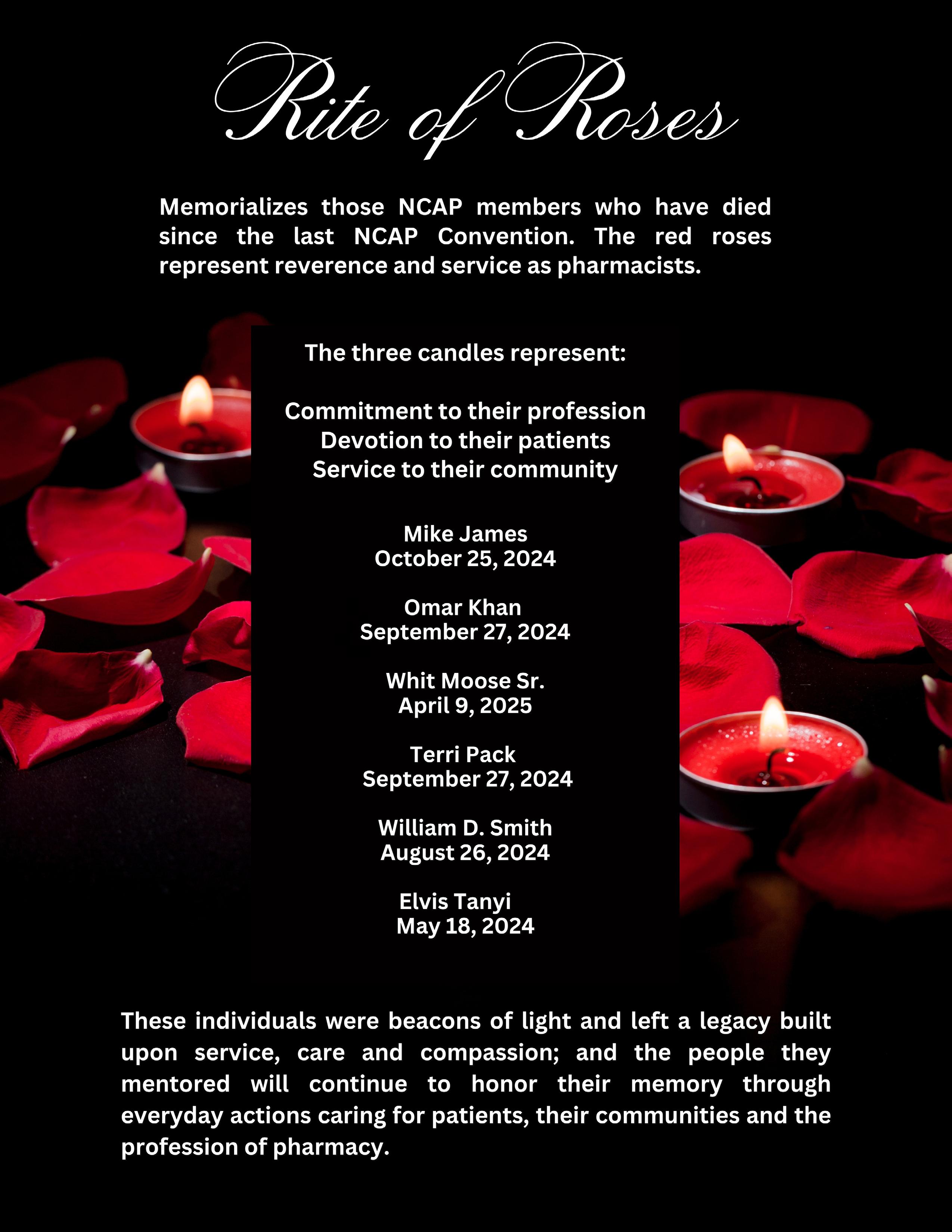


NCAP Has a New Address
After 10 years, NCAP has a new mailing address and will soon move into our new home. Our new mailing address is PO Box 58, Graham, NC 27253. Our new office is still being completed and we will let you know when we officially move into 36 Court Square SW, Graham, NC 27253. We will continue to operate as normal remotely until our move in date.
August Sunday Evening Webinar
Join us on August 24th for the August Sunday Evening Webinar. NCAP’s Executive Director, Dr. Penny Shelton, will share H67 - Profession Changing Legislation: What Does This Mean for You? What Are the Implications and Opportunities? This webinar will be ACPE accredited for 1 hour of live CE for pharmacists and pharmacy technicians. Learn more and register here!
Register for the 2025 Anti-Infective Conference Today!
Do you specialize in the treatment of infectious diseases, or just want to know more about what’s happening in this area of pharmacy practice? Then join us for the 2025 Anti-Infective Conference at Greensboro Country Club in Greensboro, NC on Friday, October 3rd. The conference is ACPE accredited for 5 hours of live CE. Learn more and register today!
Residency Showcase Registration is Open!
The 2025 Residency Showcase will be Saturday, November 8th at the Novant Forsyth Conference Center in Winston-Salem, NC. This is an awesome opportunity
for residency programs and 4th year students to meet in an effort to make that perfect match! Students and residency programs, visit our webpage to learn more and register to join us!
Ambulatory Care Huddle
Join NCAP’s virtual Ambulatory Care Huddle on the fourth Friday each month. These sessions create space for pharmacists to exchange ideas, discuss clinical pearls, and tackle real-world ambulatory care challenges together. For more information and to RSVP, click here.
Health-System and Hospital Huddle
Connect with peers in pharmacy leadership during NCAP’s Health-System & Hospital Huddle, held the third Friday each month. This forum spotlights operational, clinical, and financial issues unique to hospitals and health systems, with discussion driven by member-submitted topics. For more information and to RSVP, click here
Campbell University CE Event
Campbell University is hosting an event, Unraveling Interconnections: Metabolic Syndrome as the Driver of Cardio-renal-hepatic Disorders.This event is September 20th in Wrightsville Beach, NC. For all the details, visit Campbell’s events page.
Don’t miss an NCAP event! Check out our full calendar at ncpharmacists.org.
